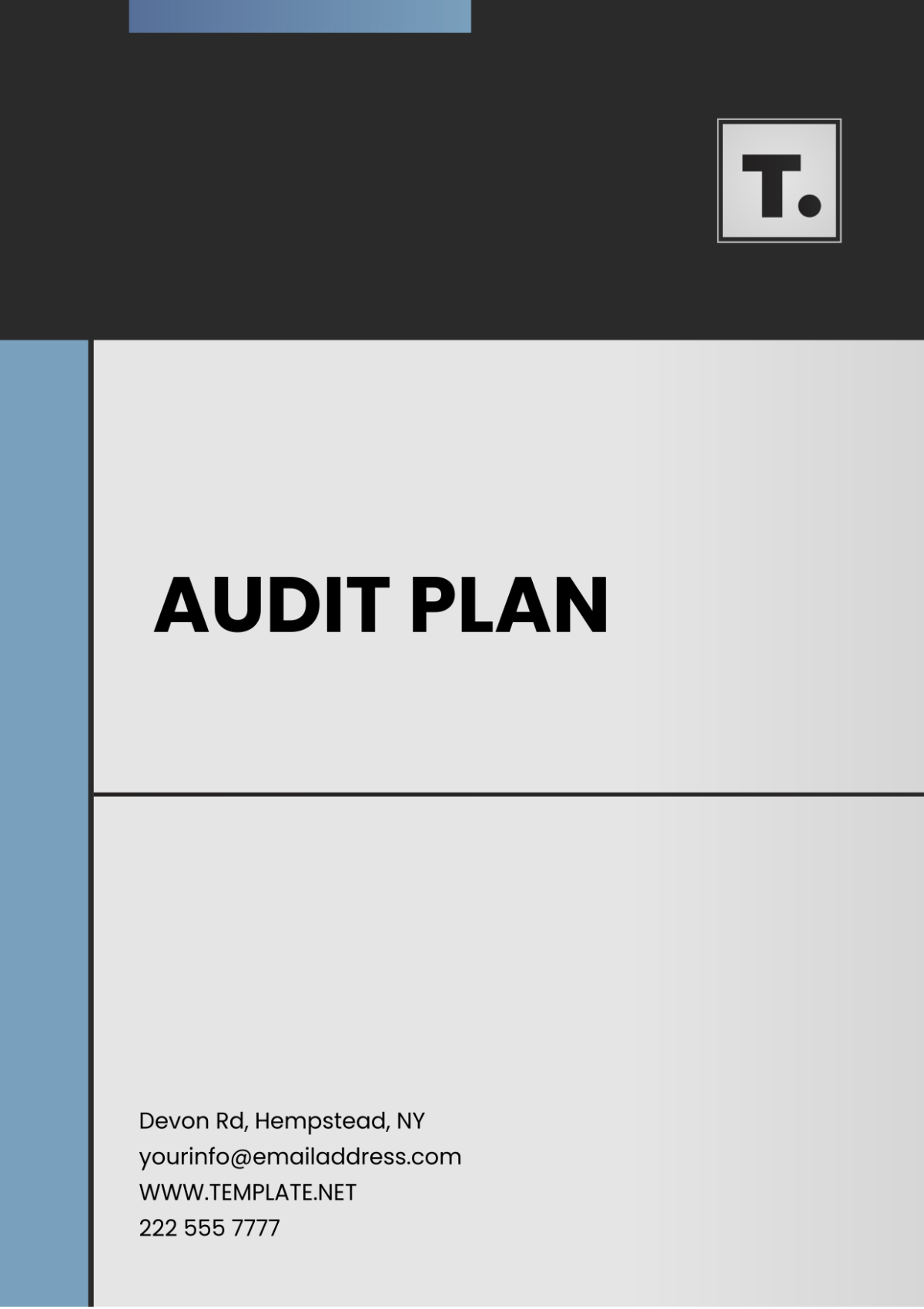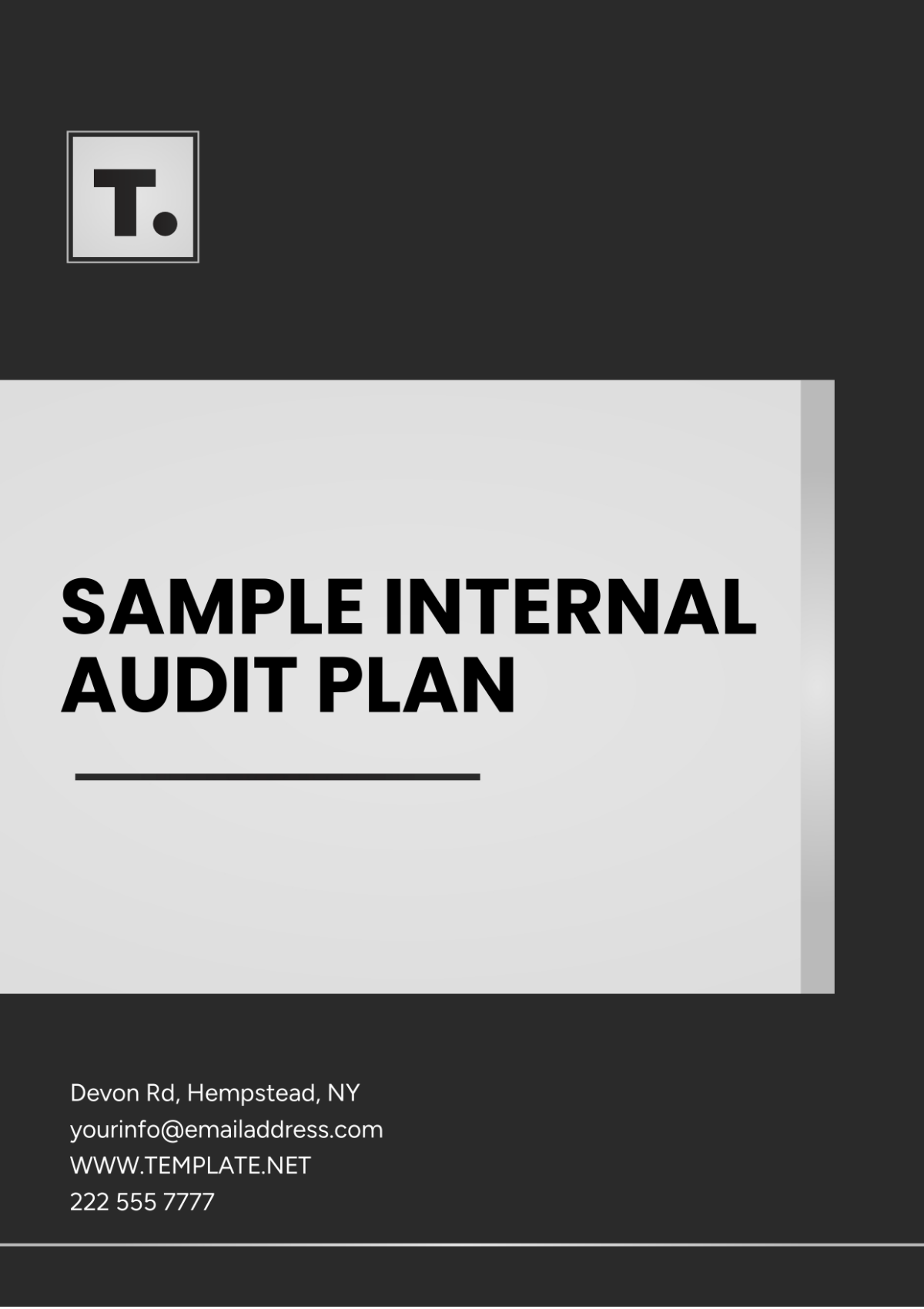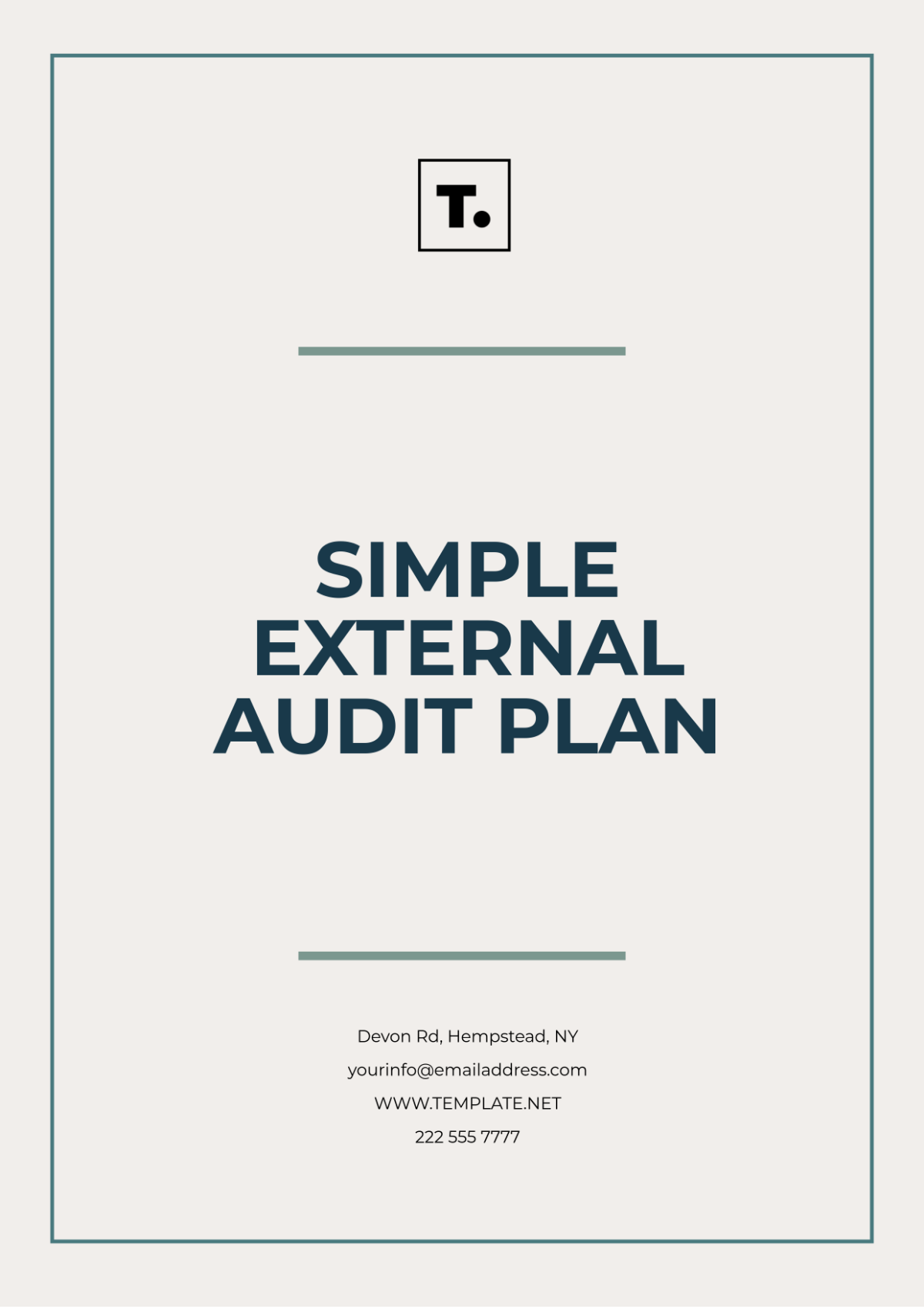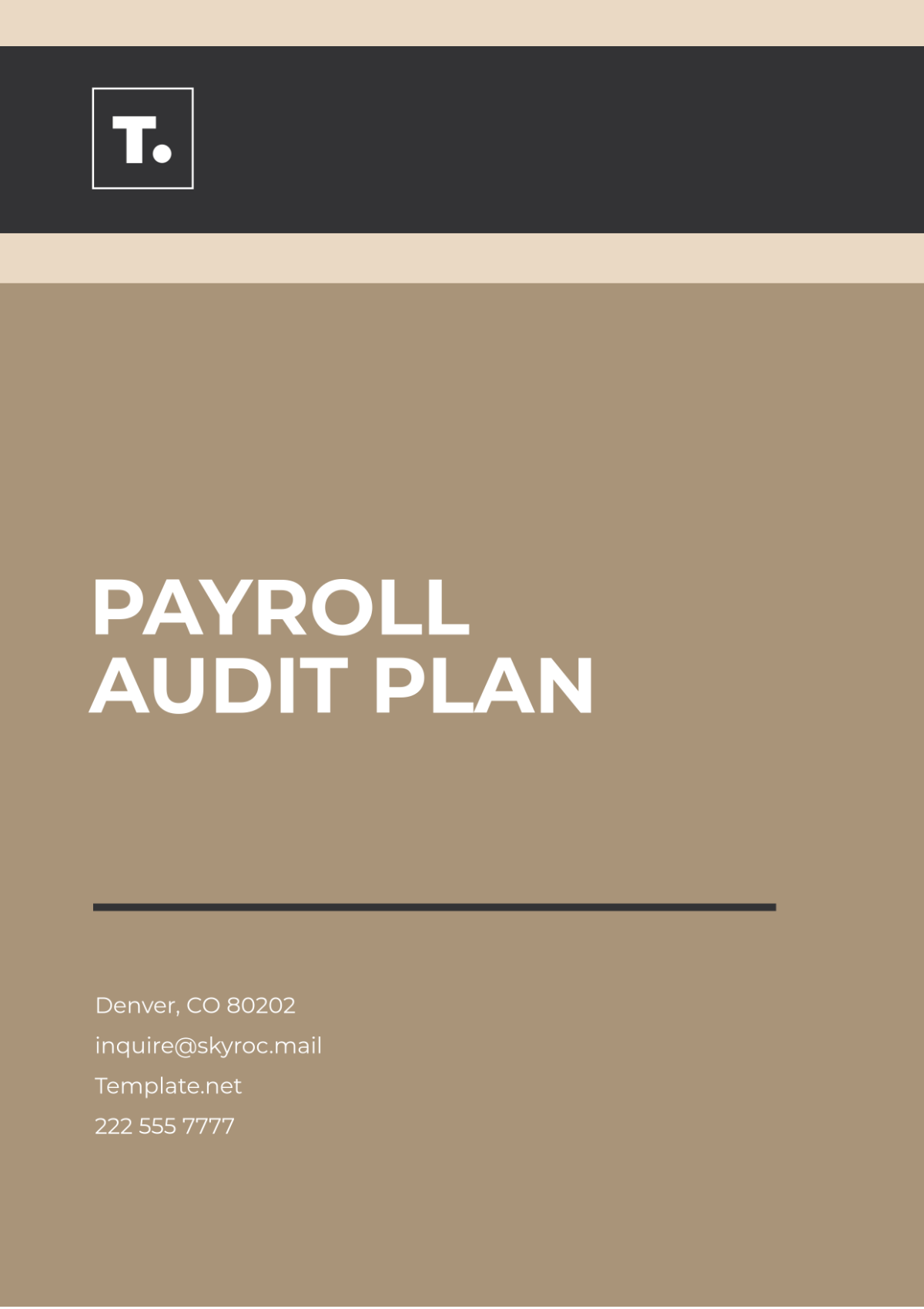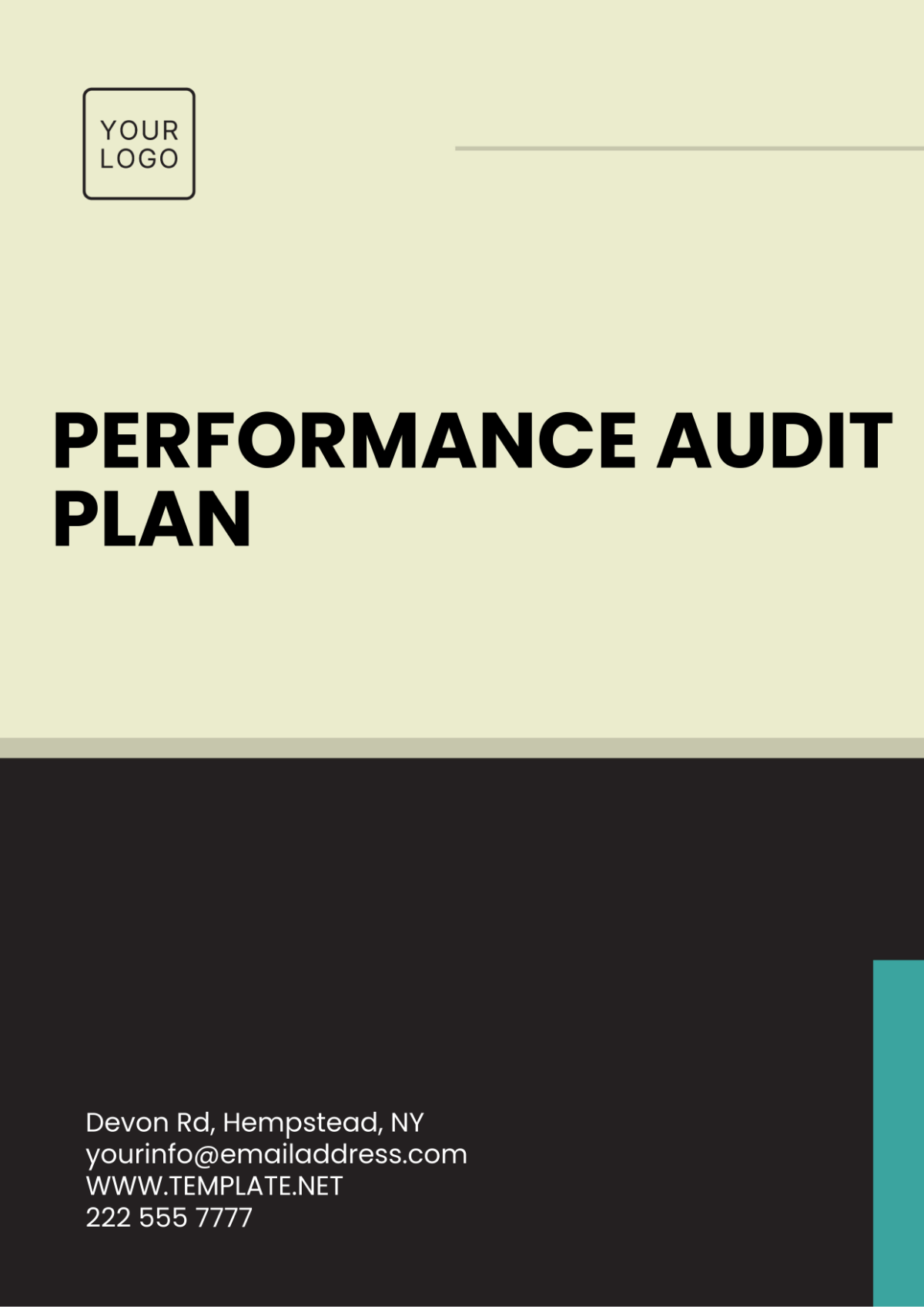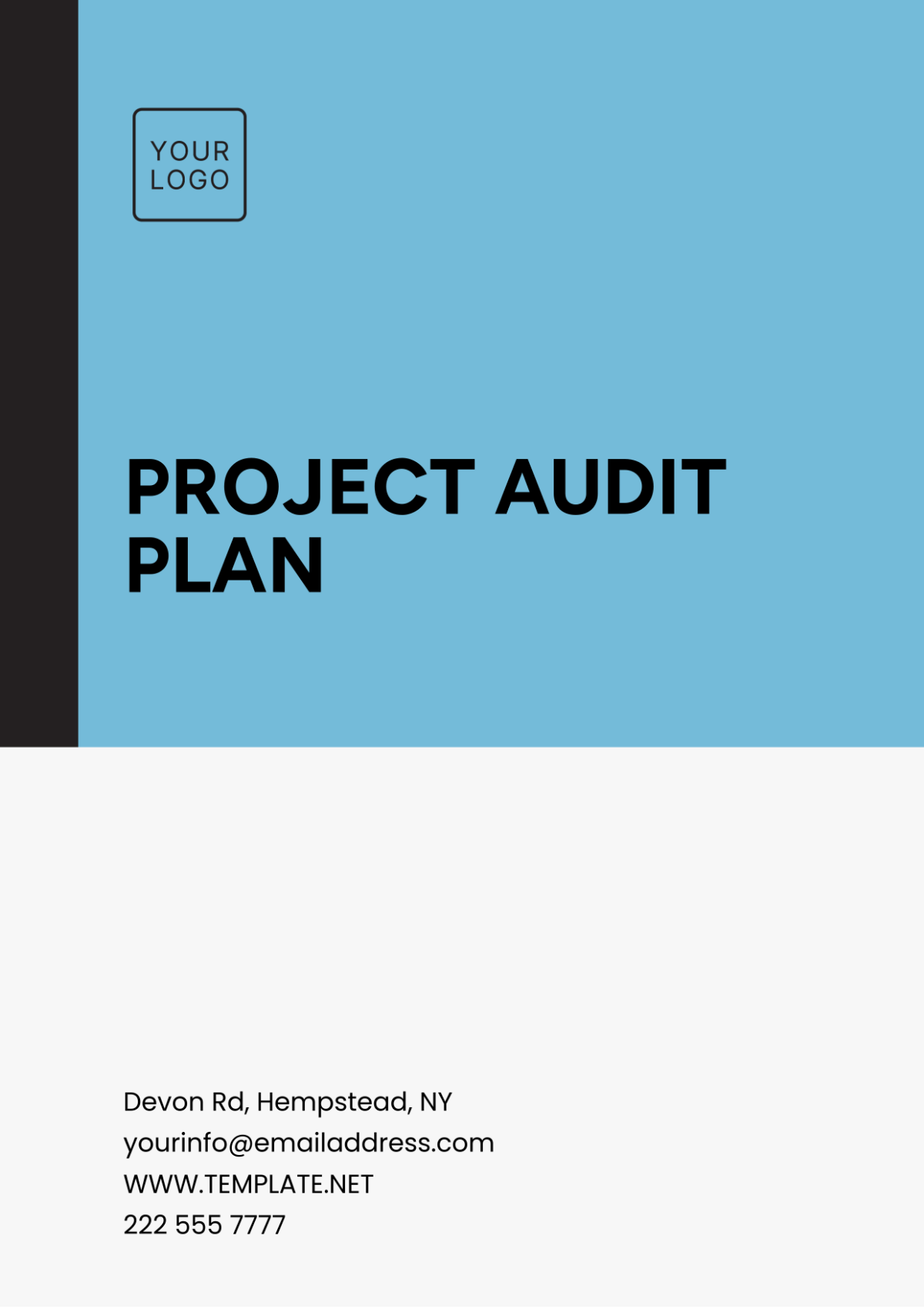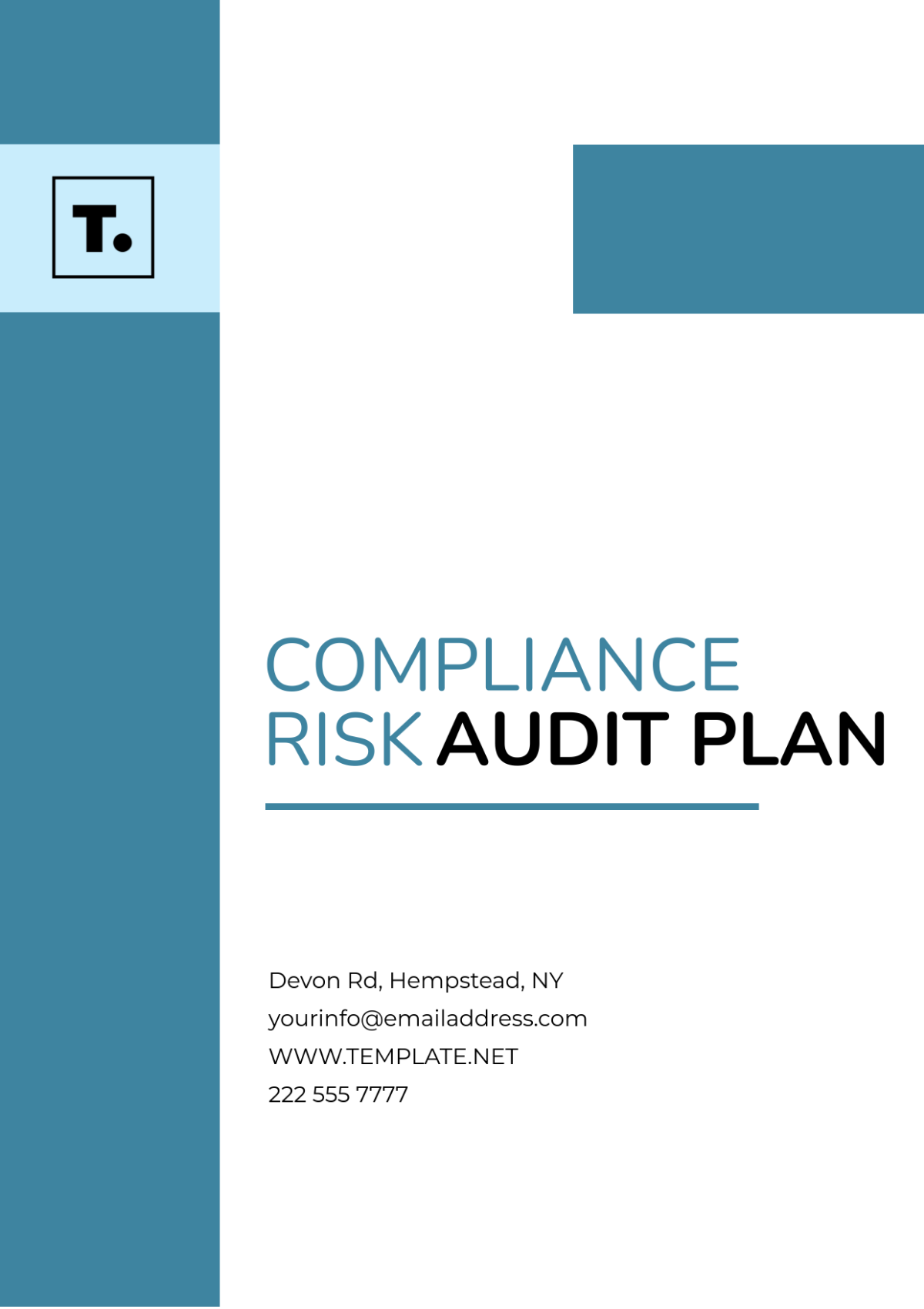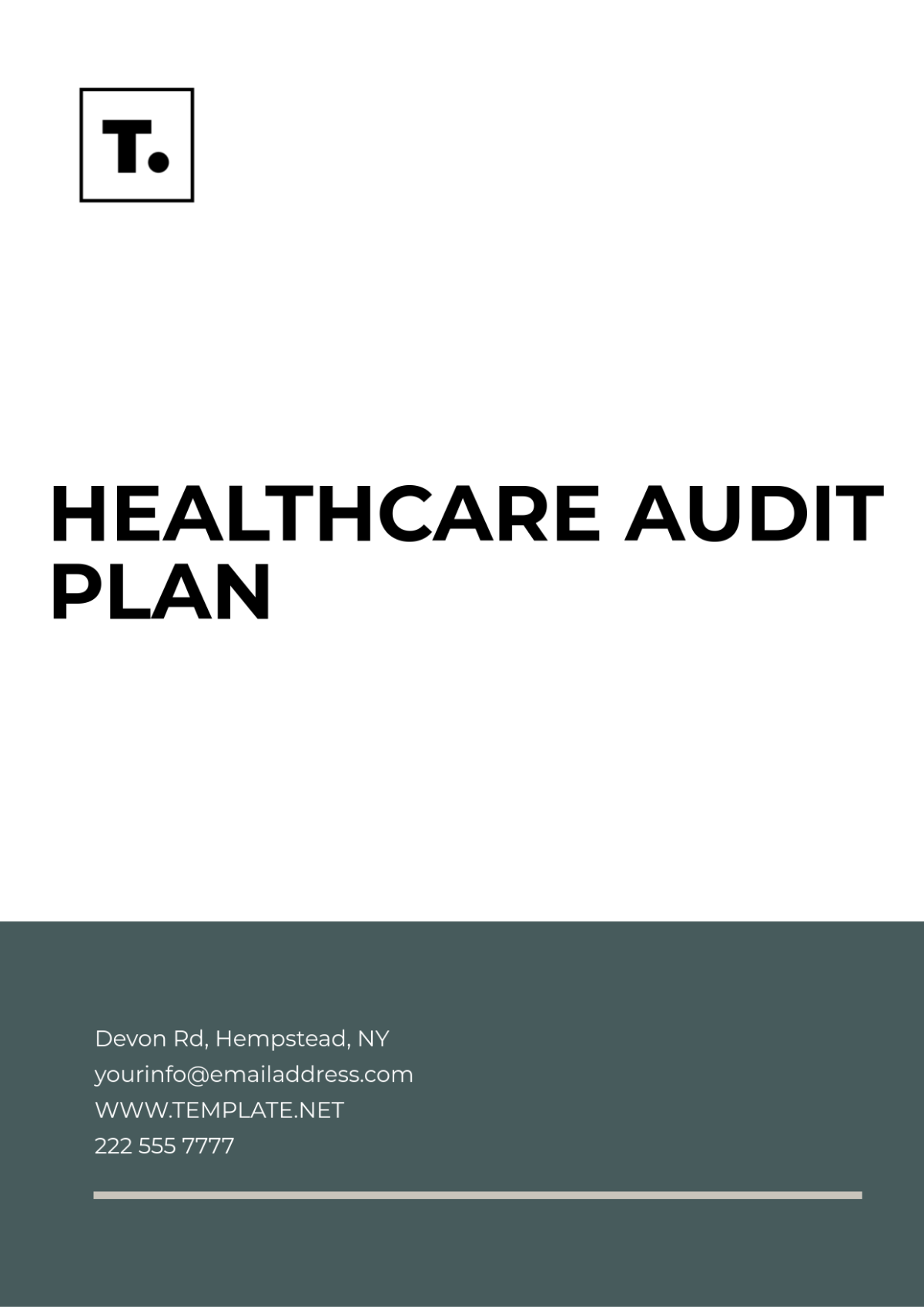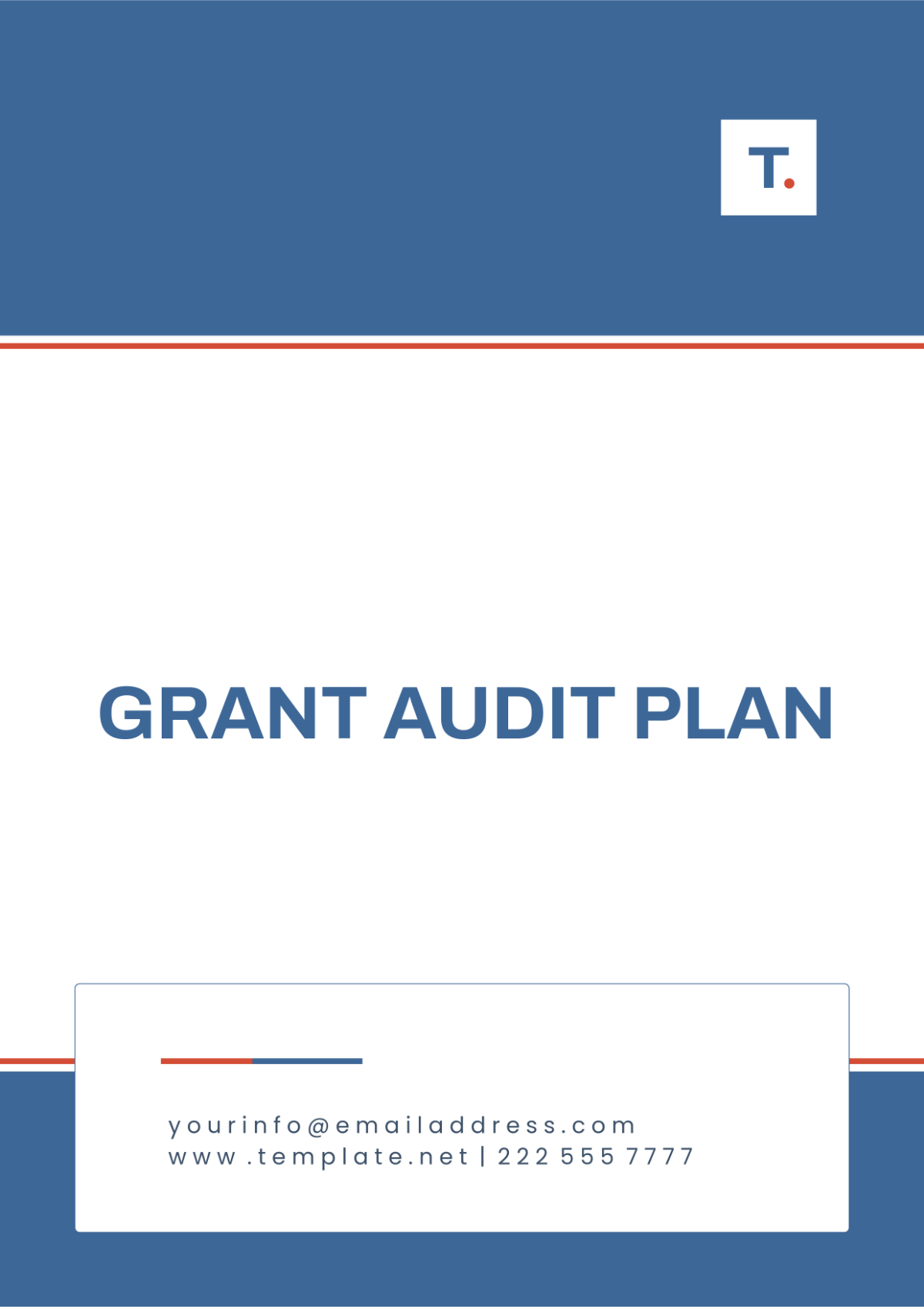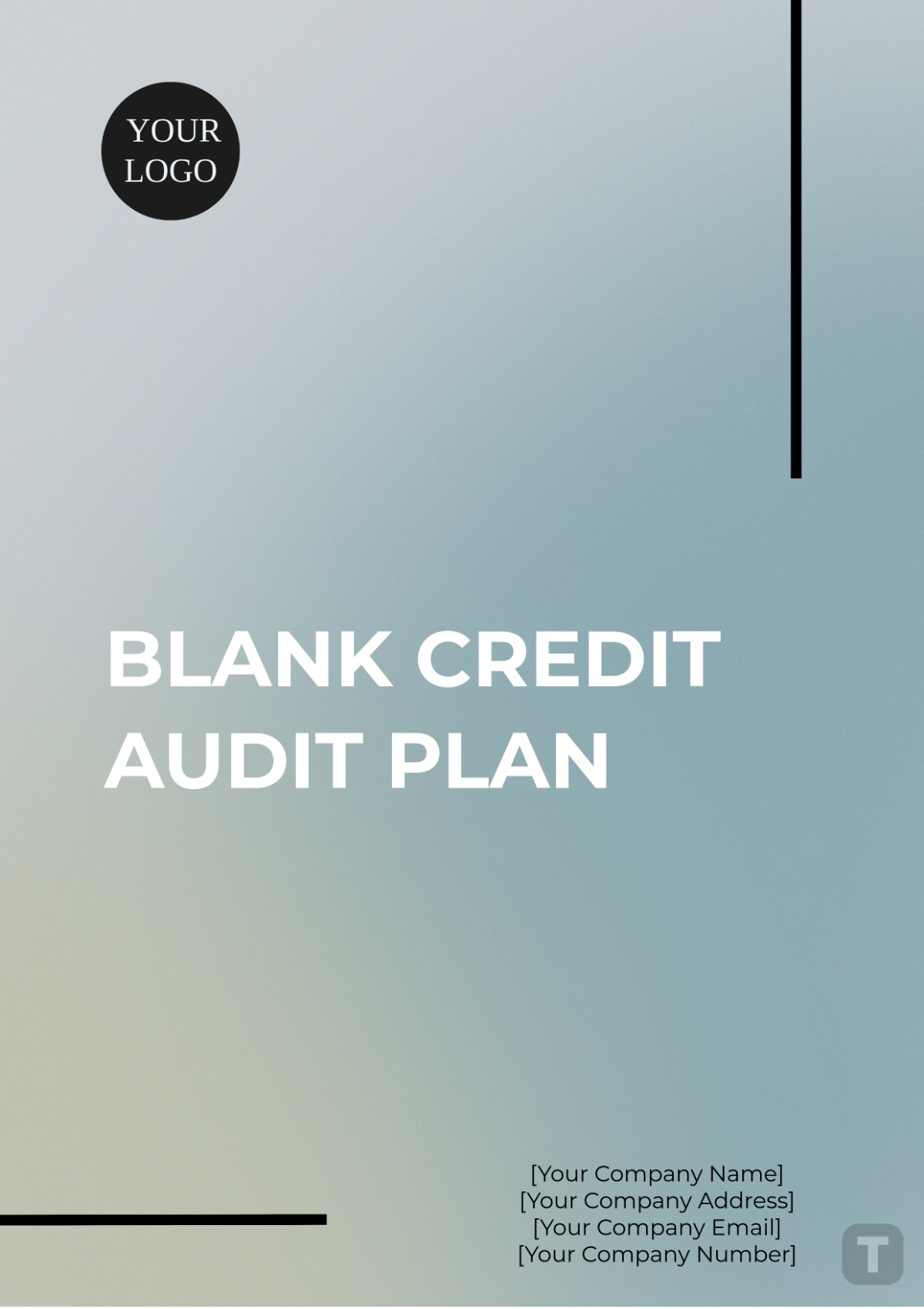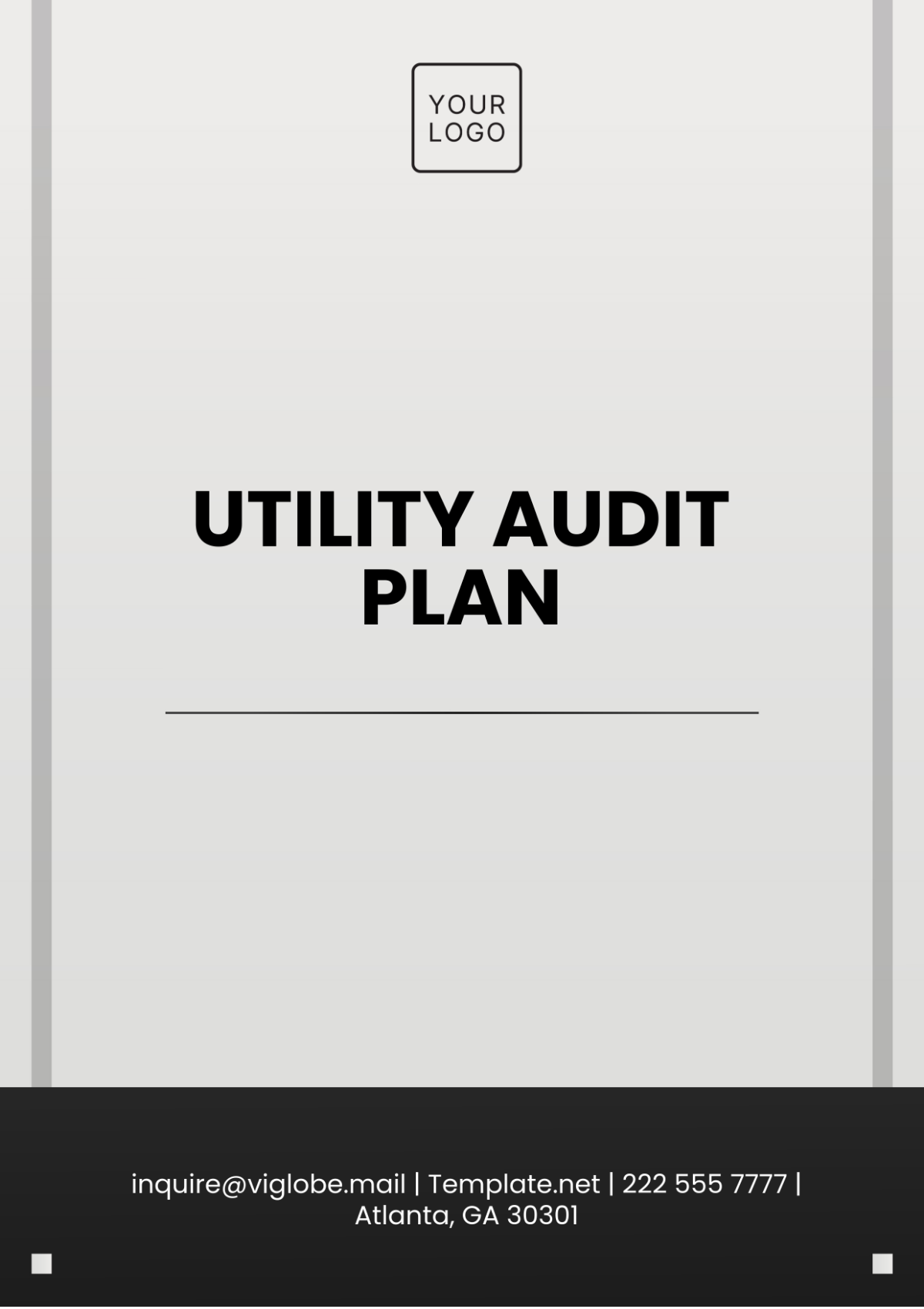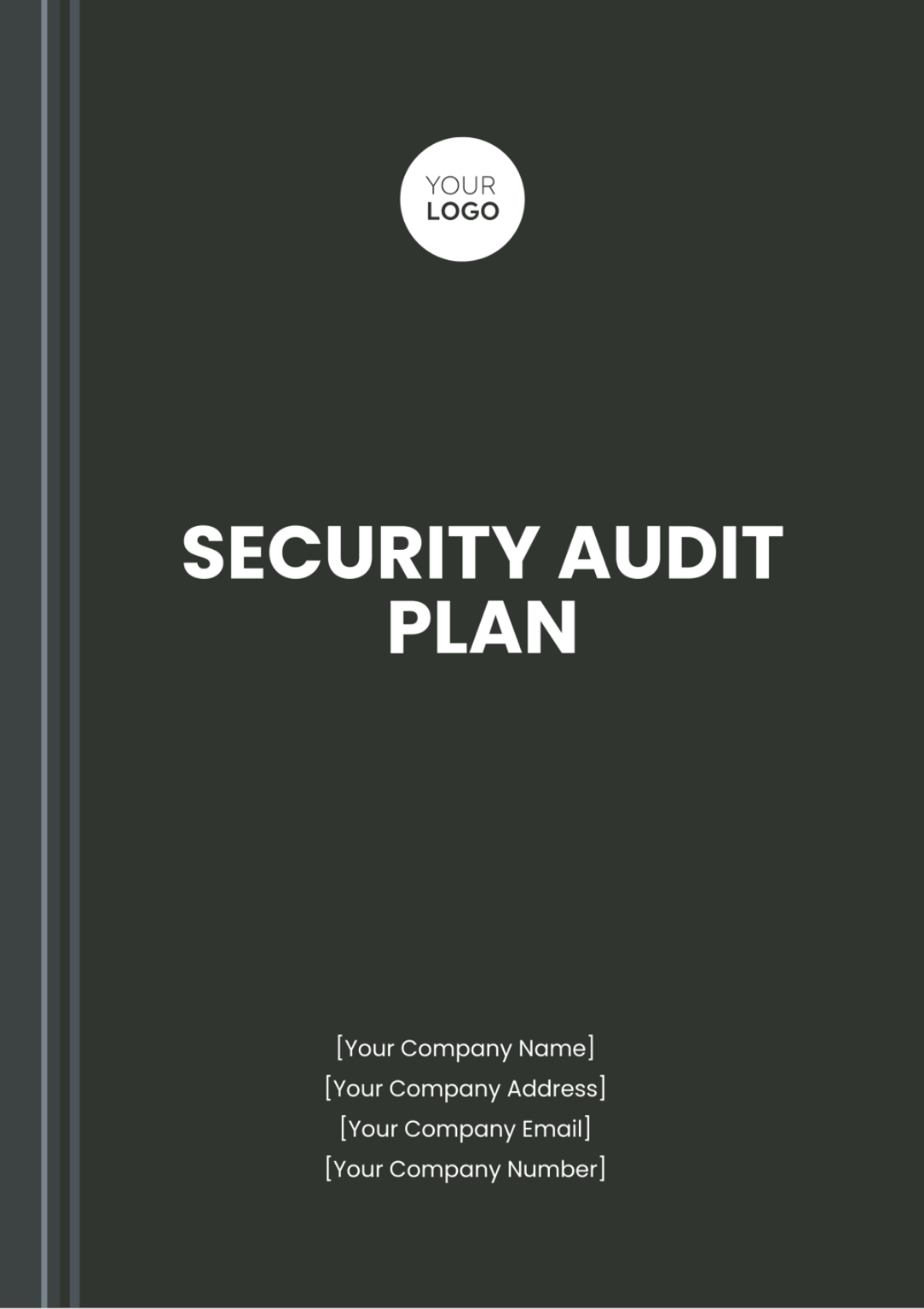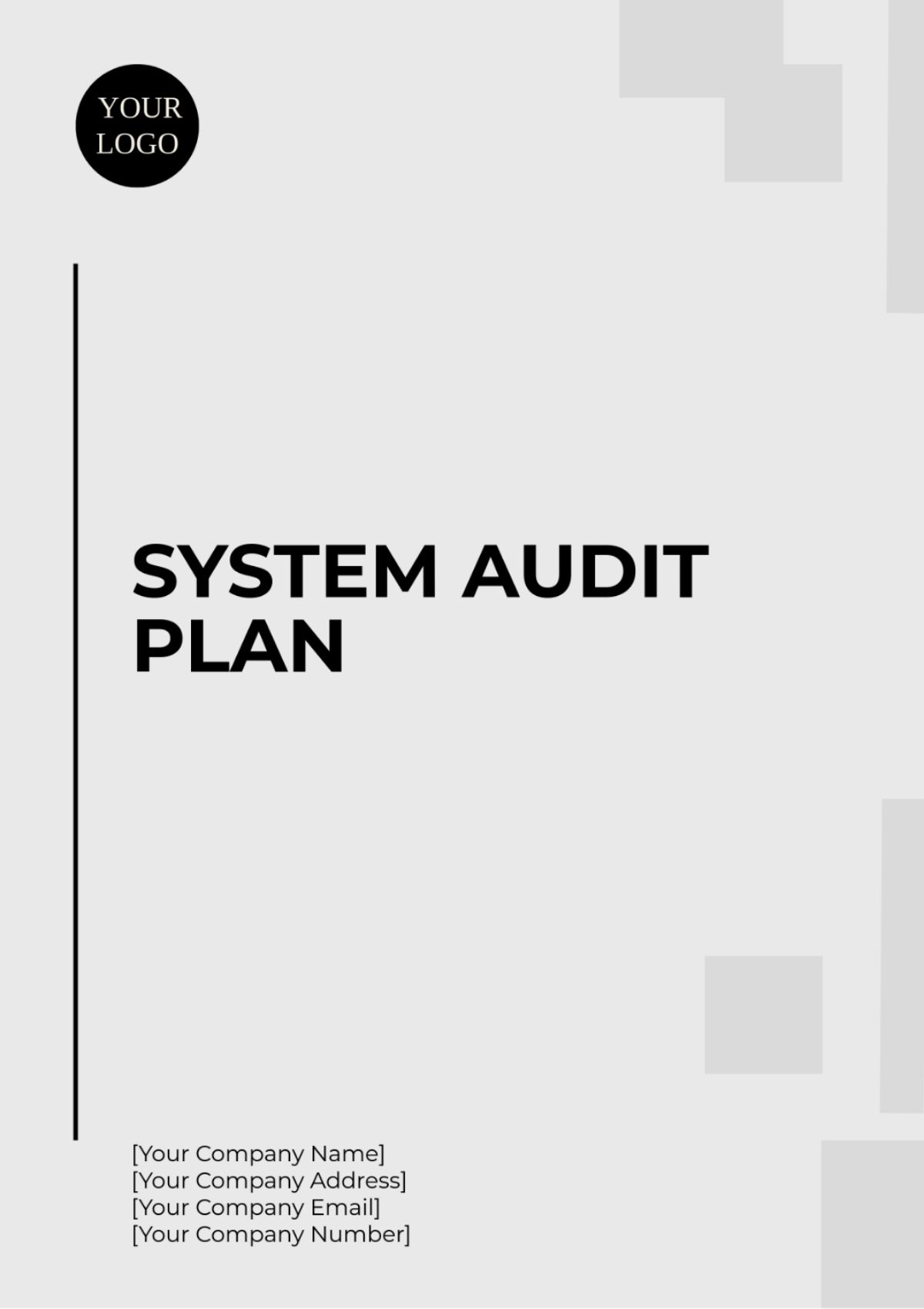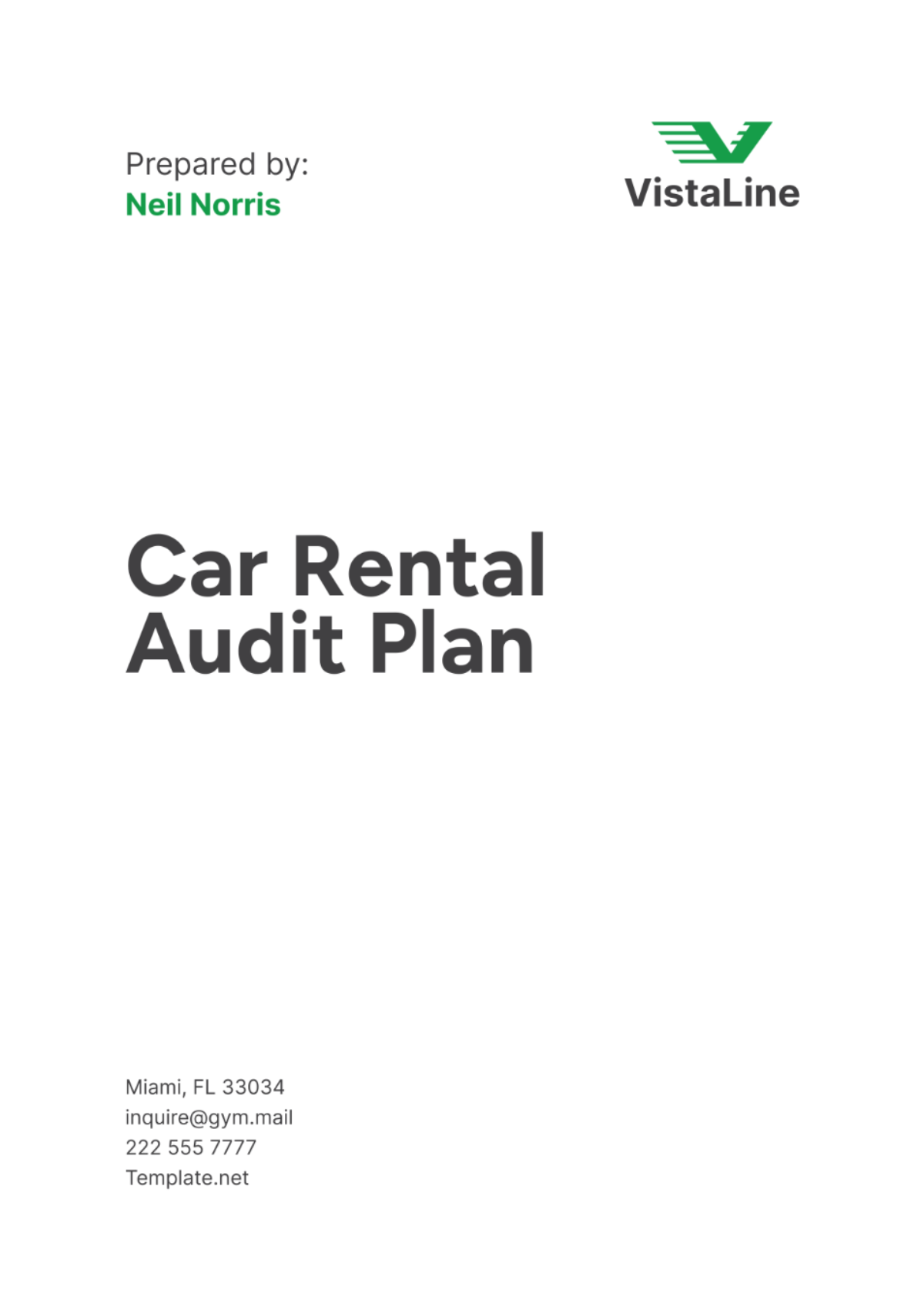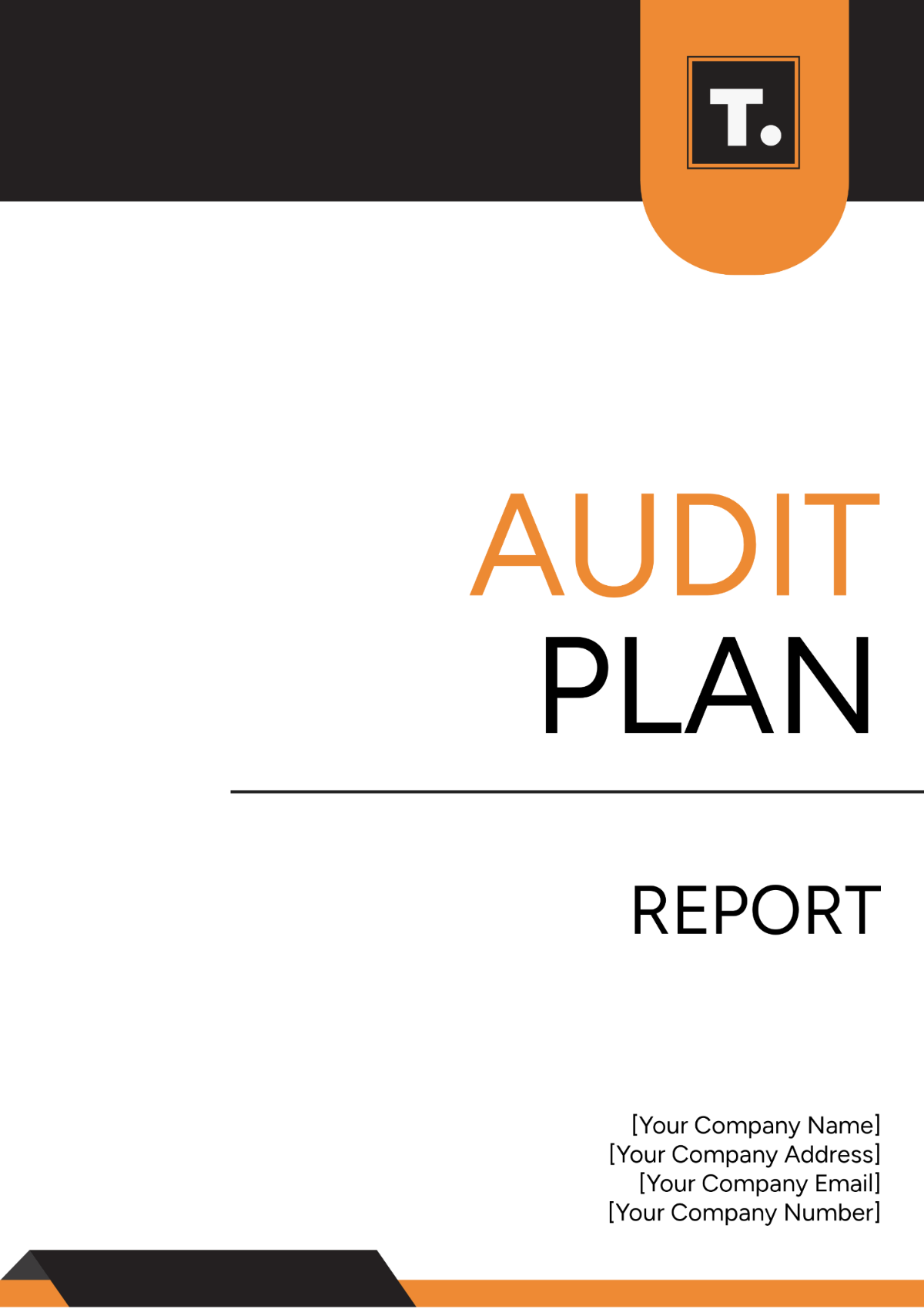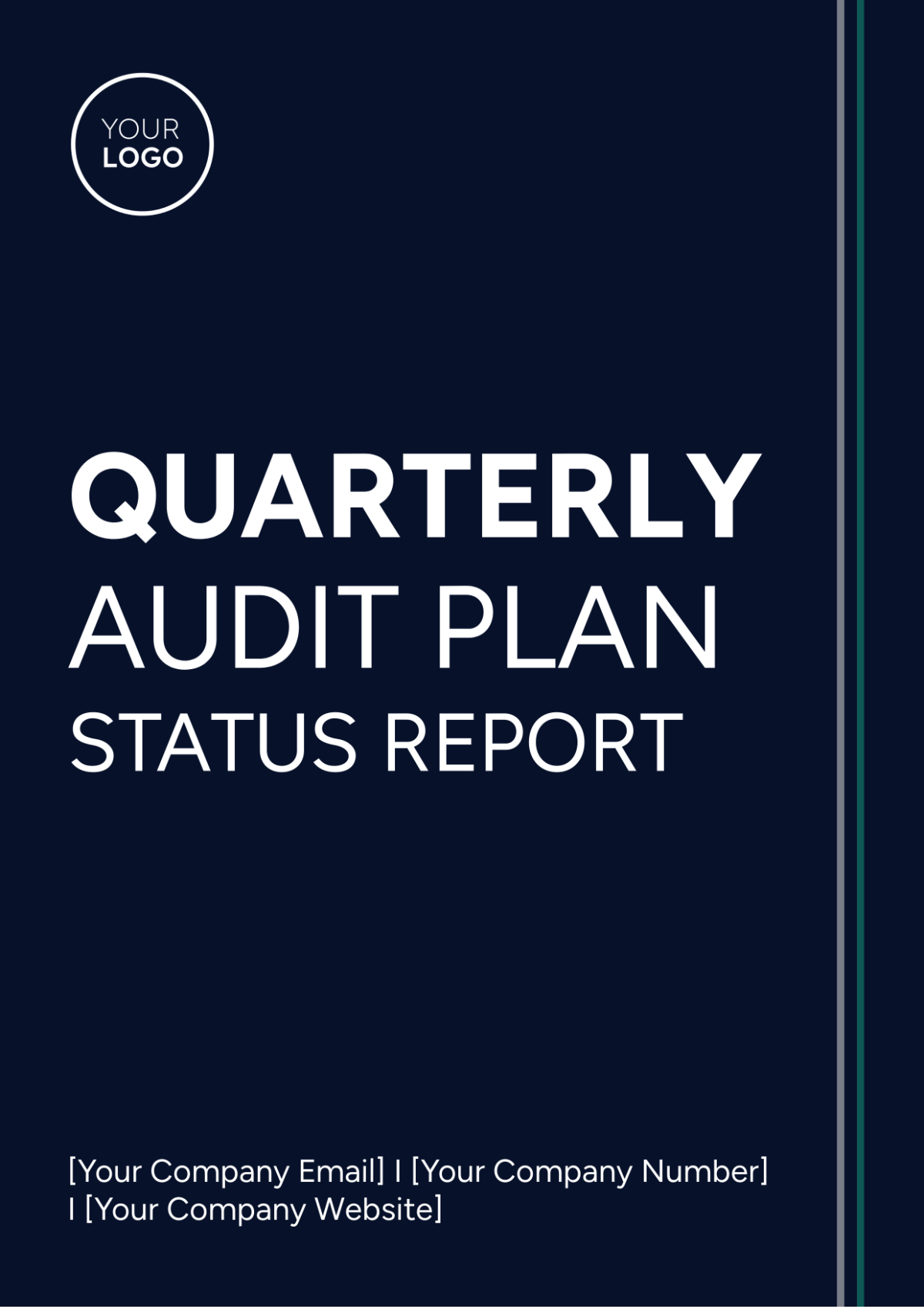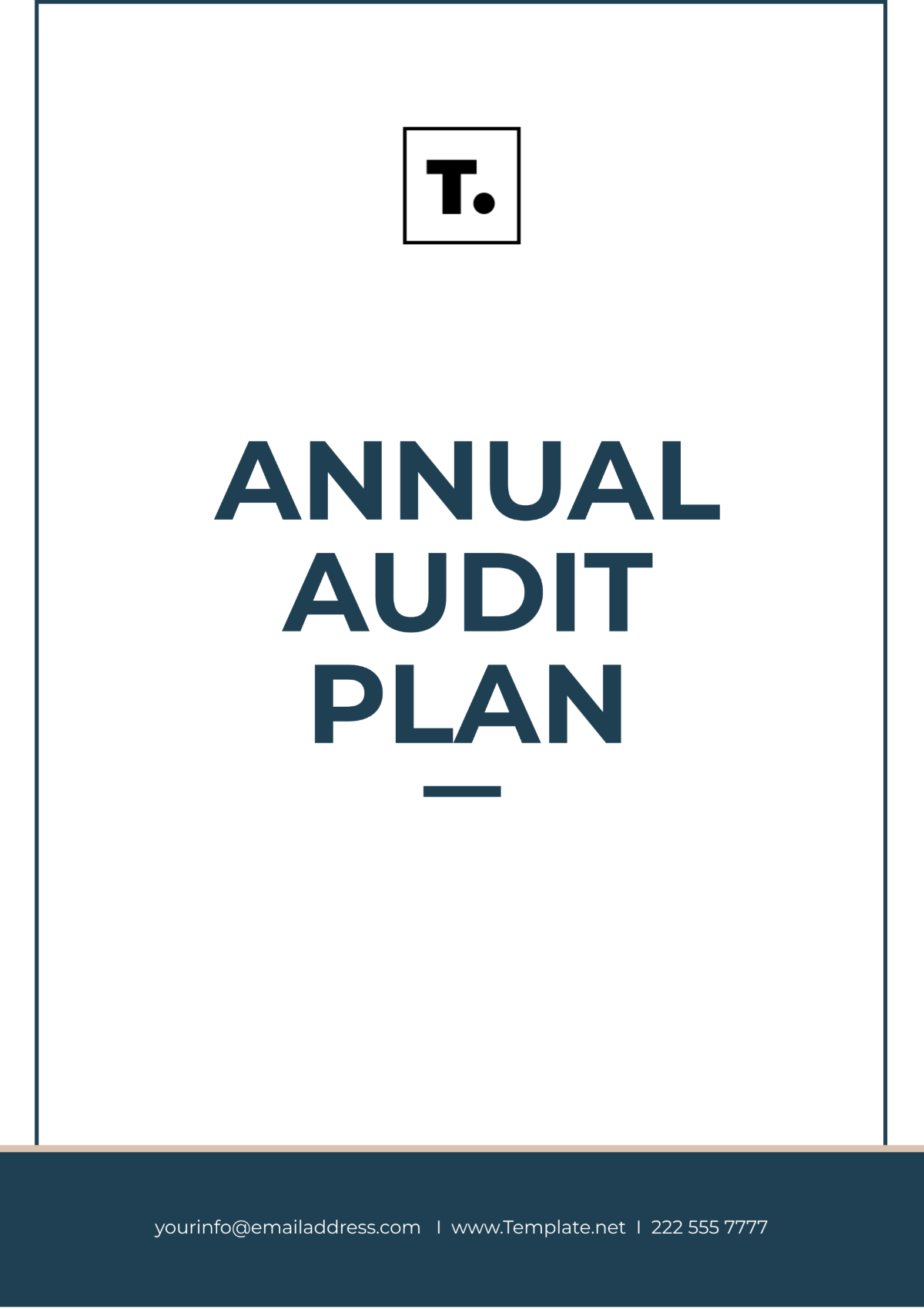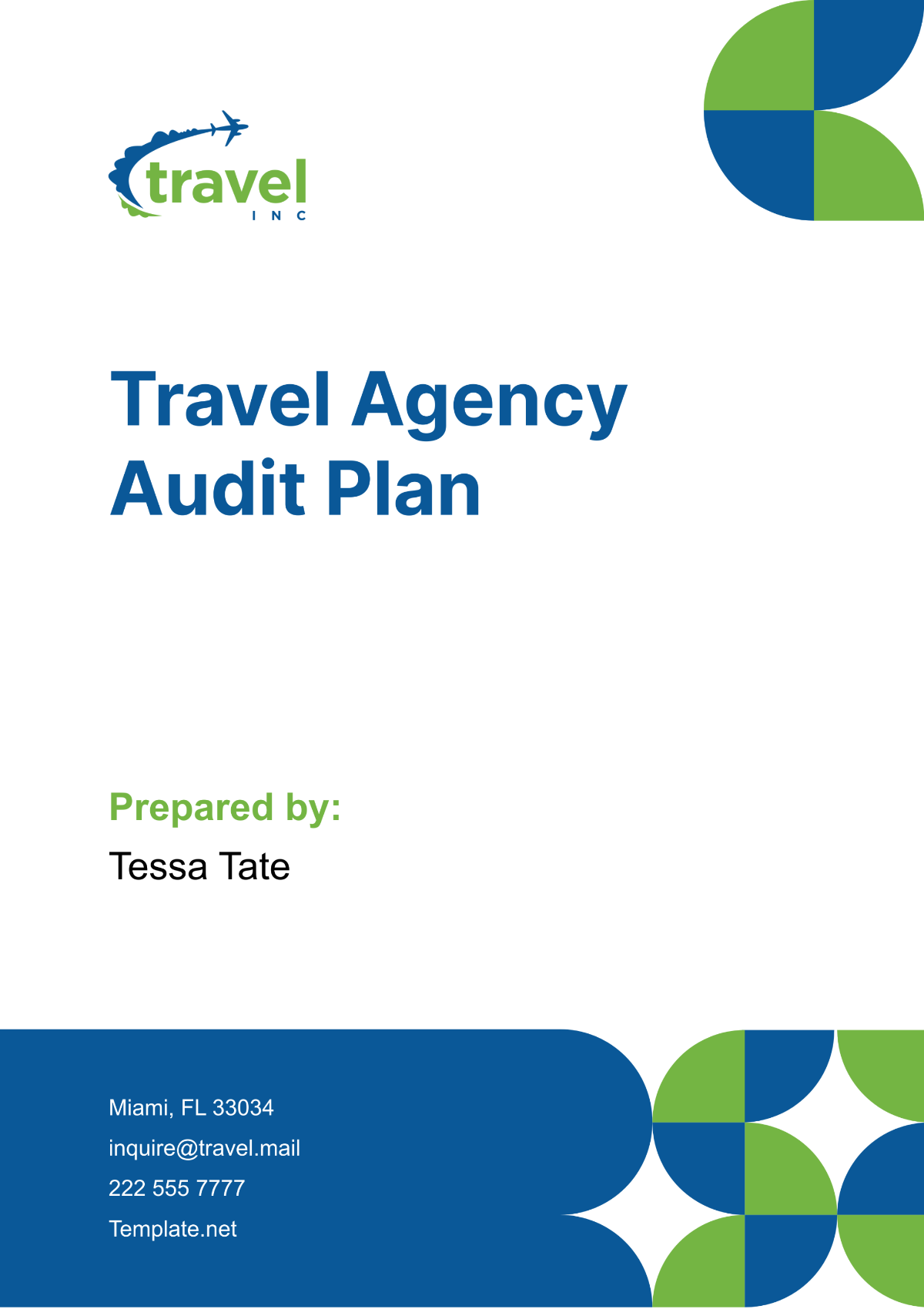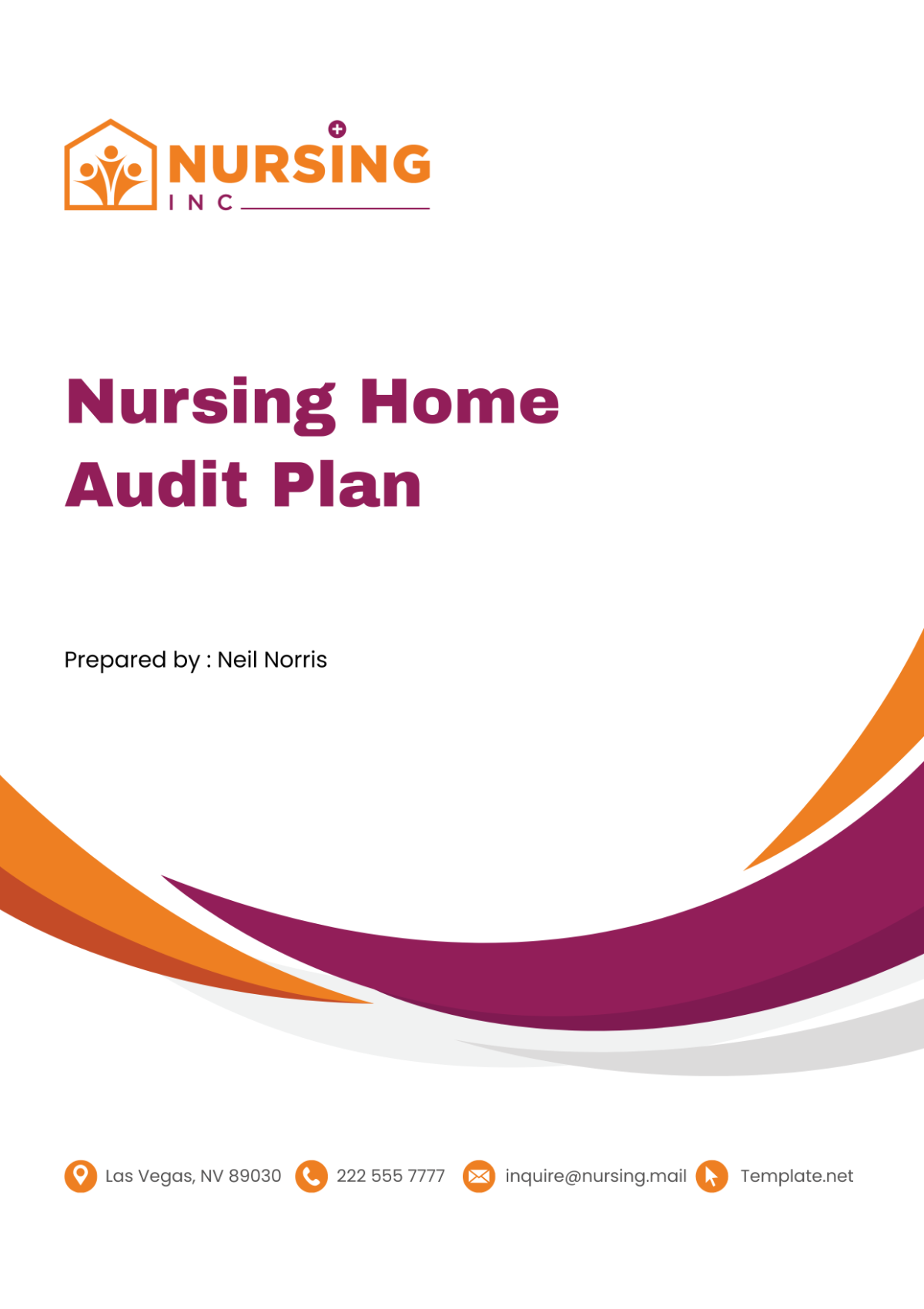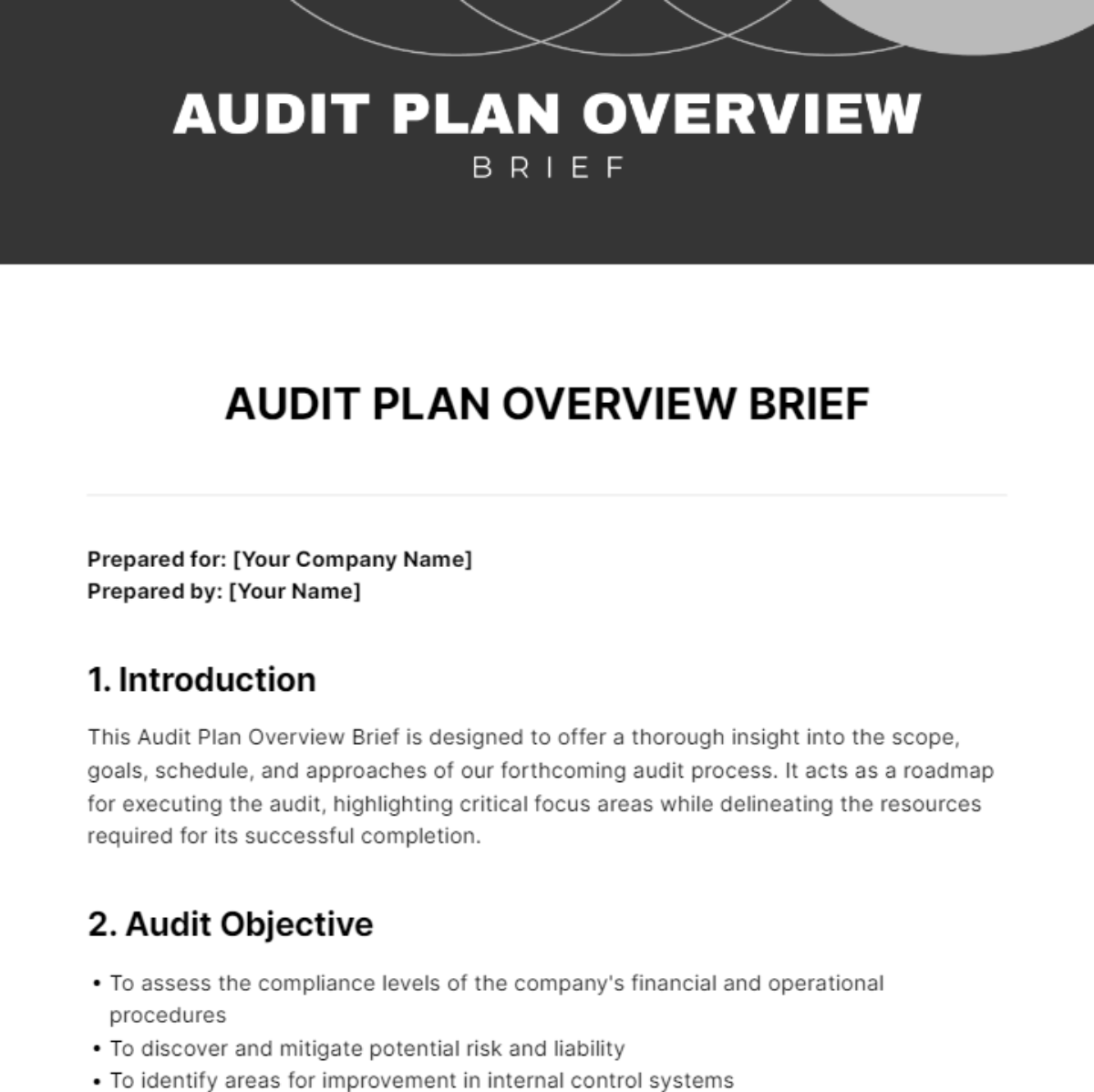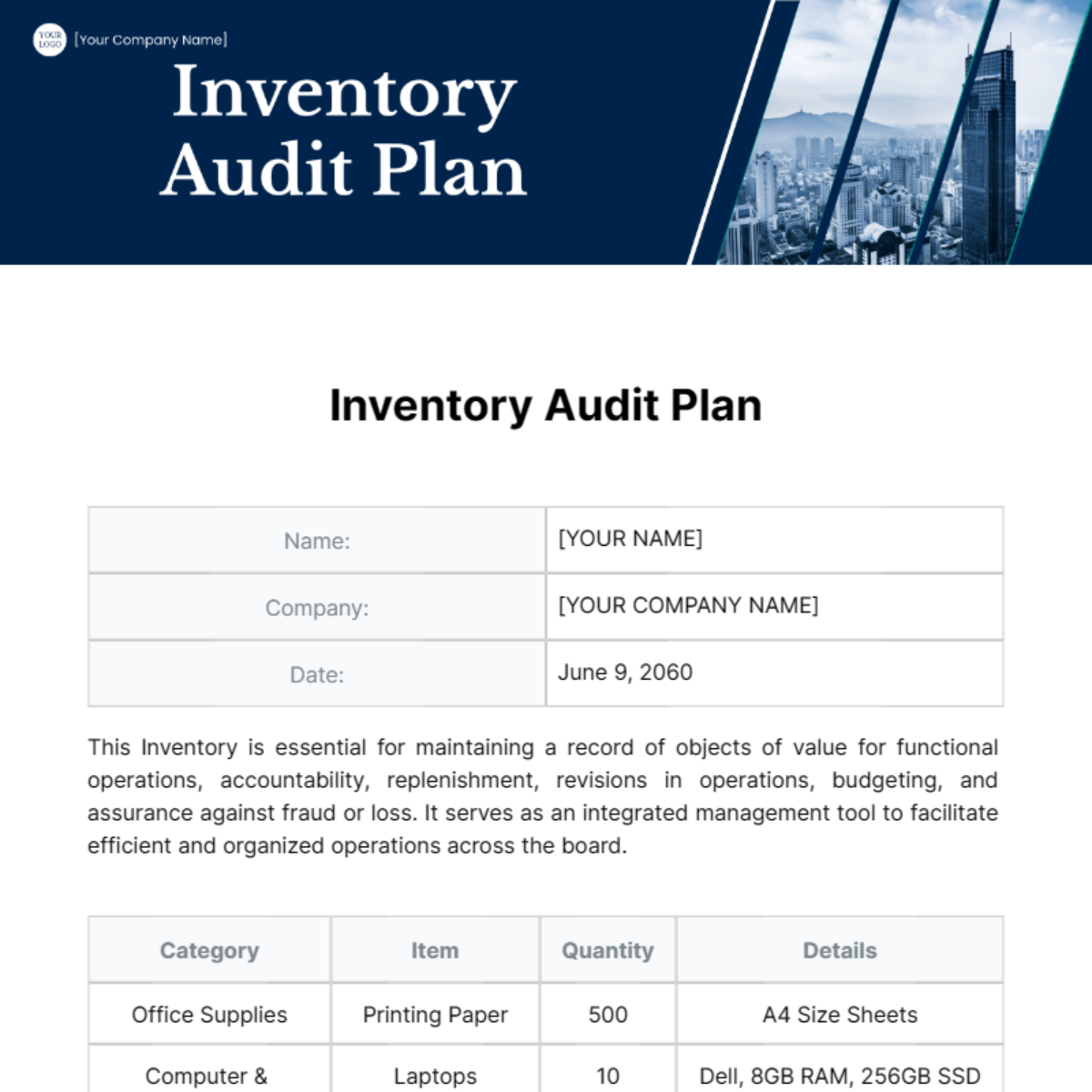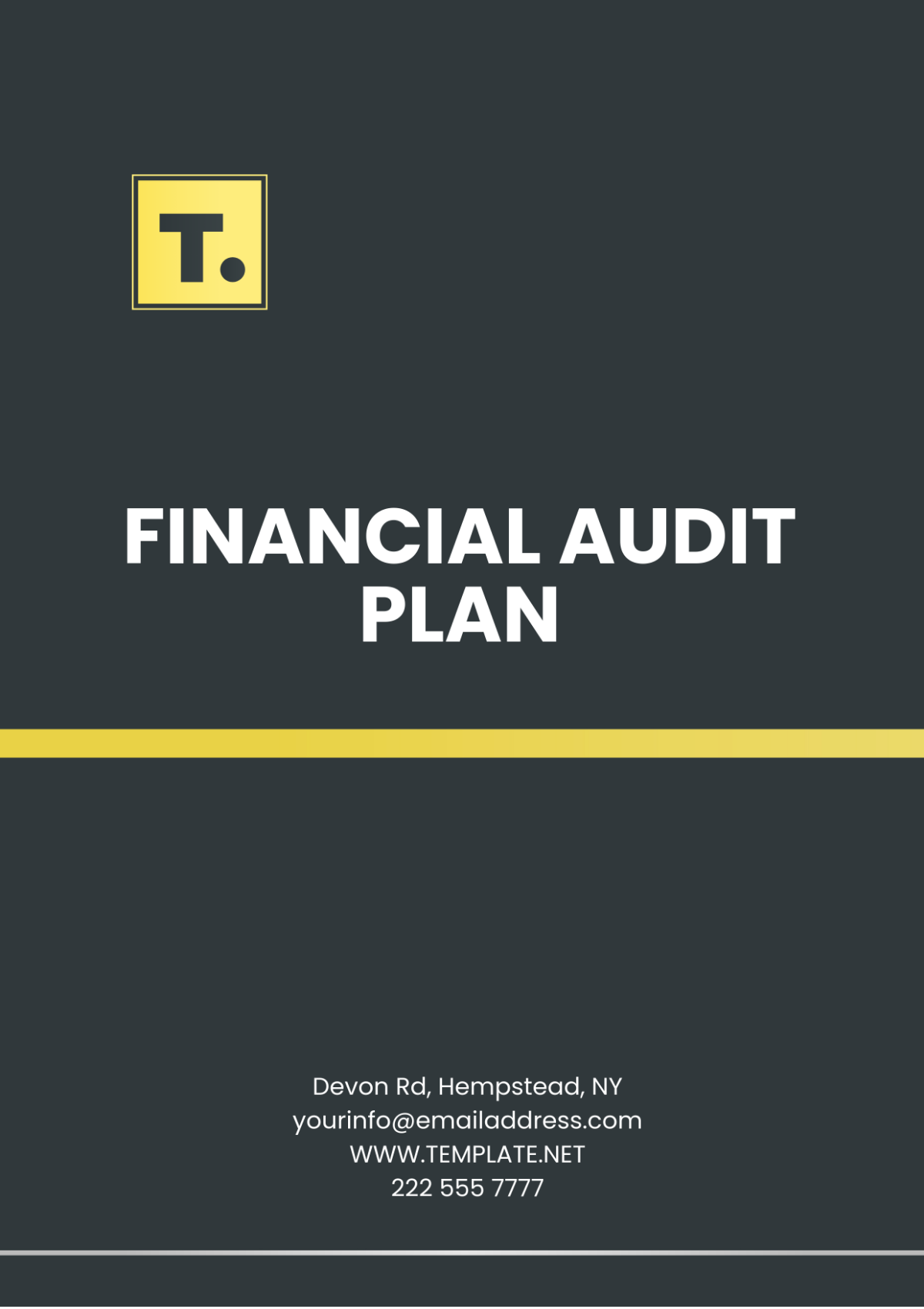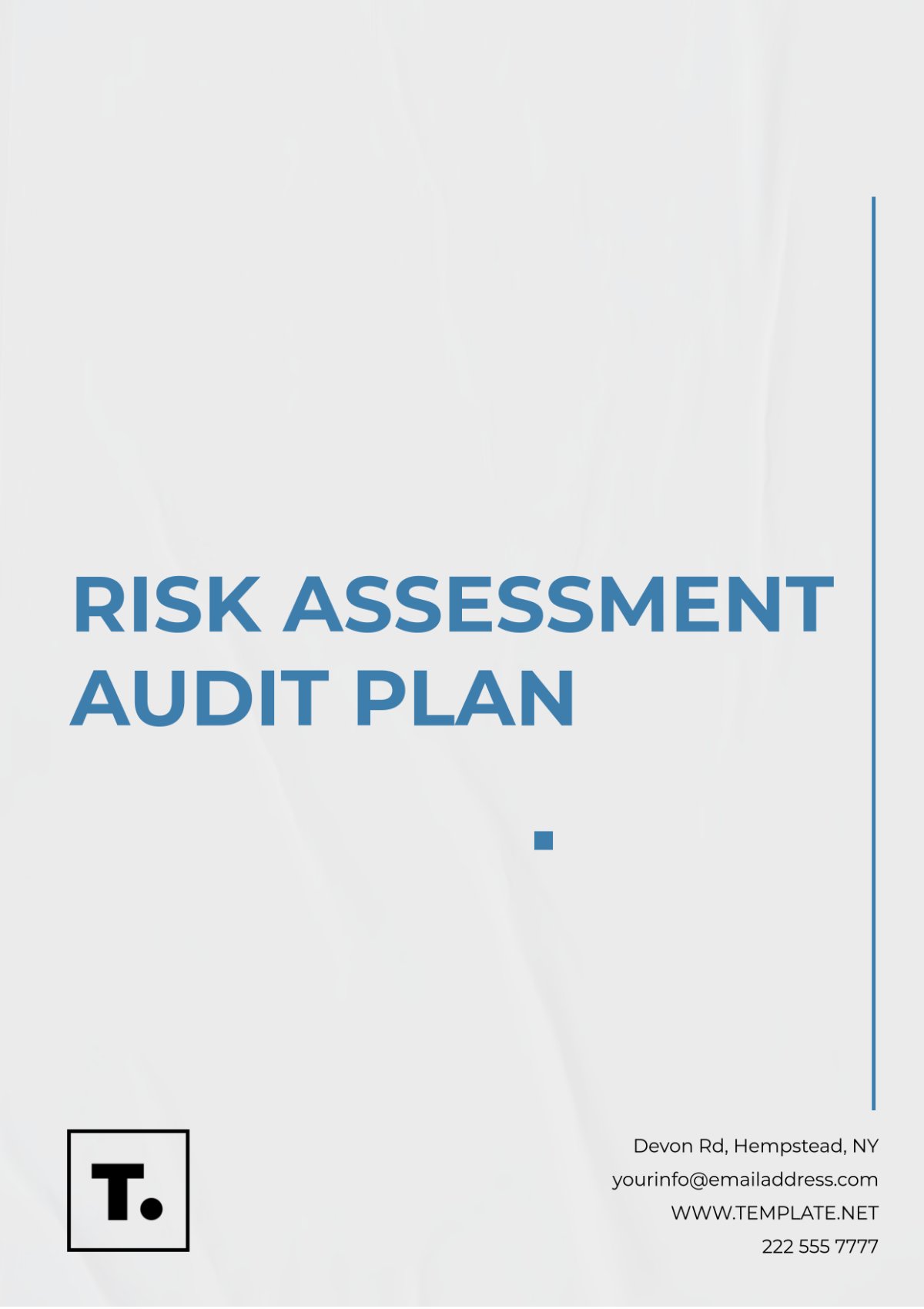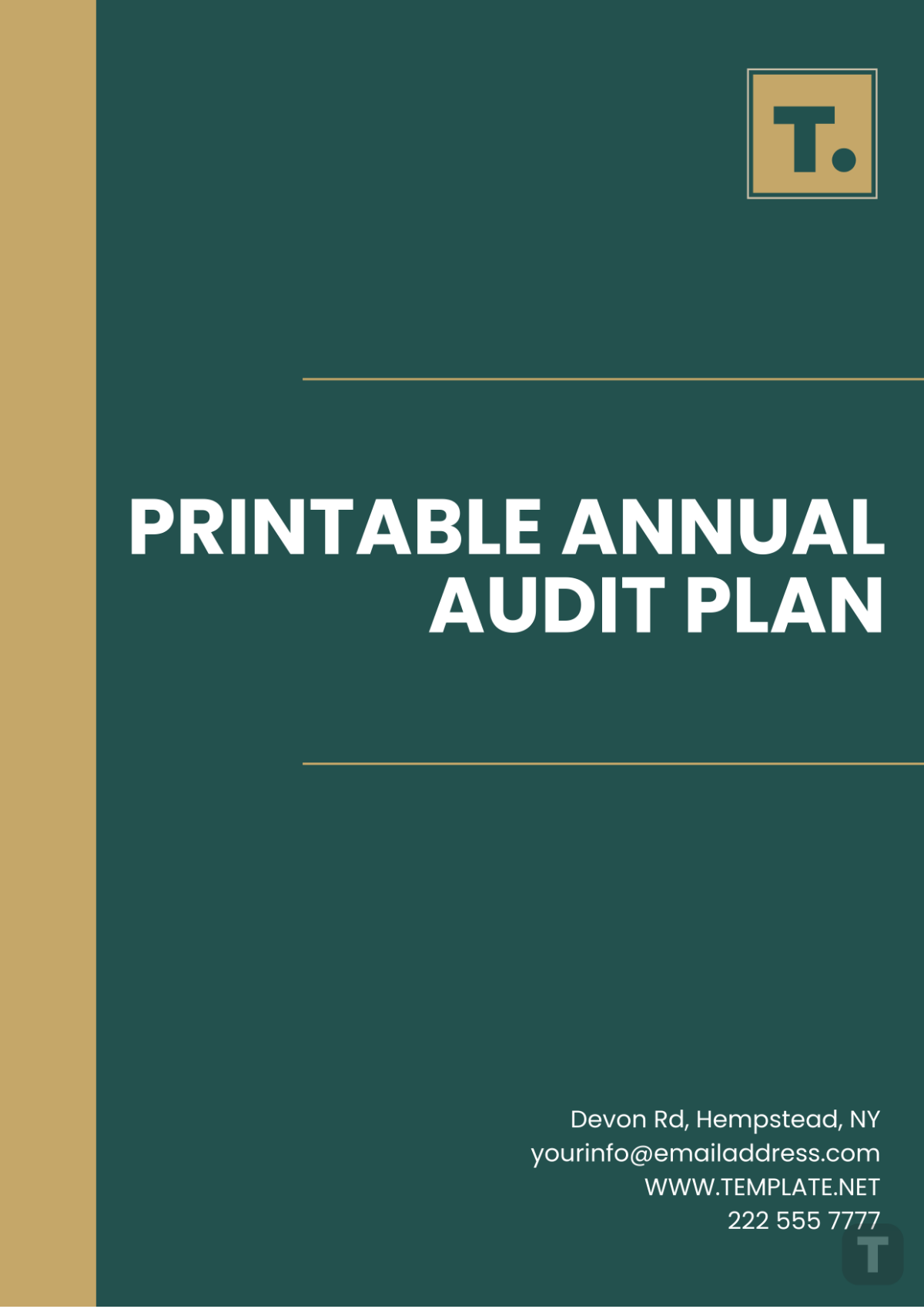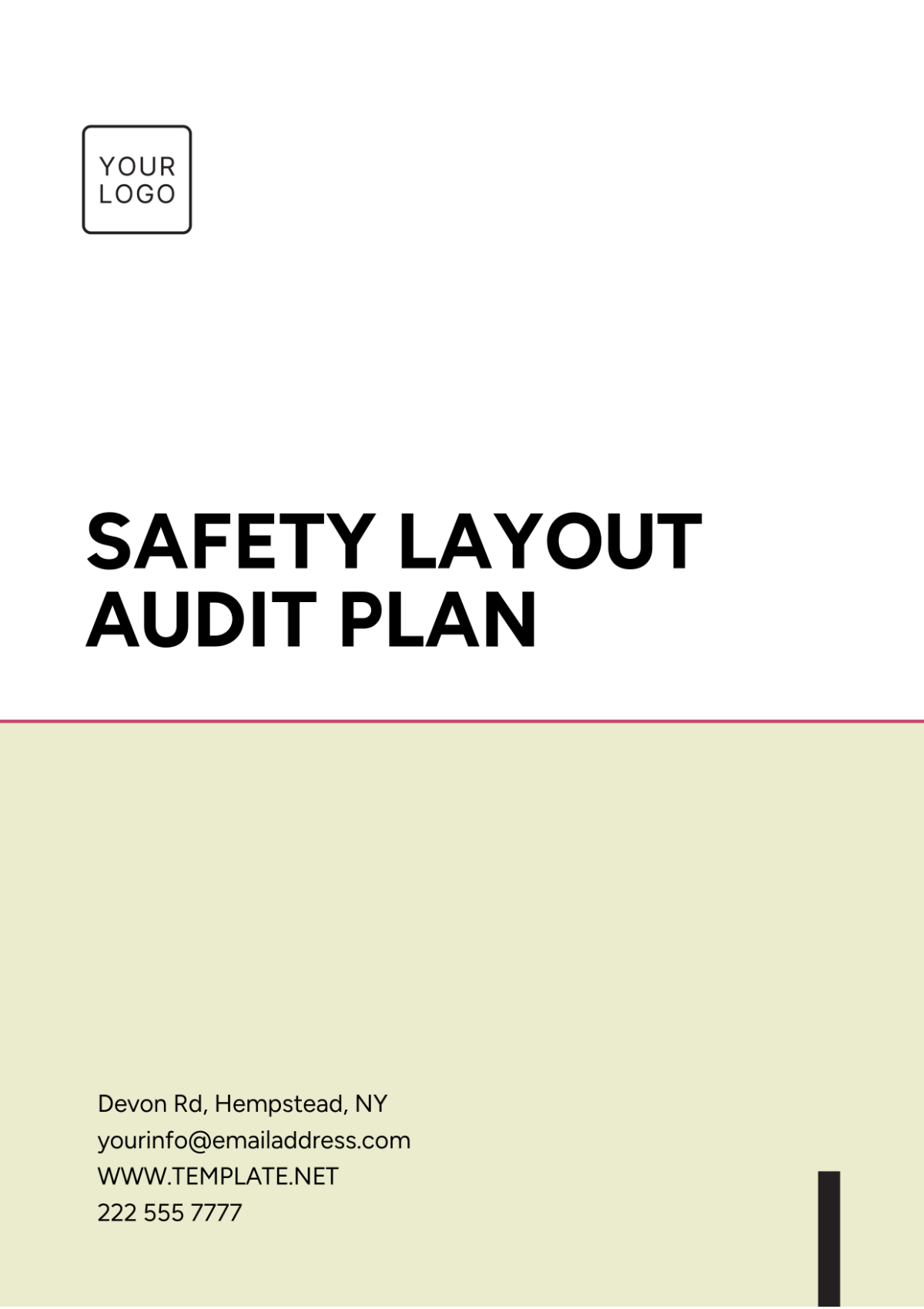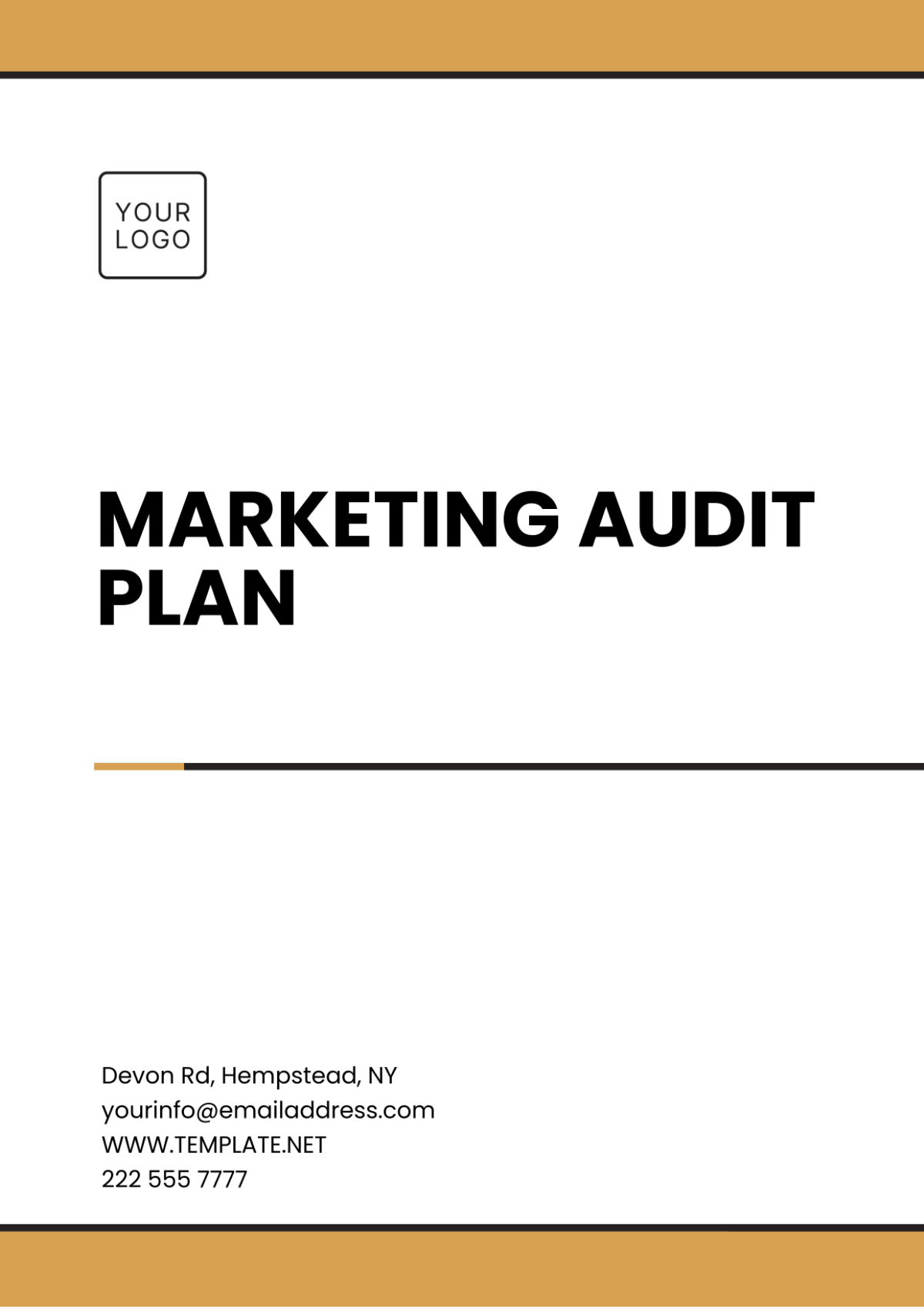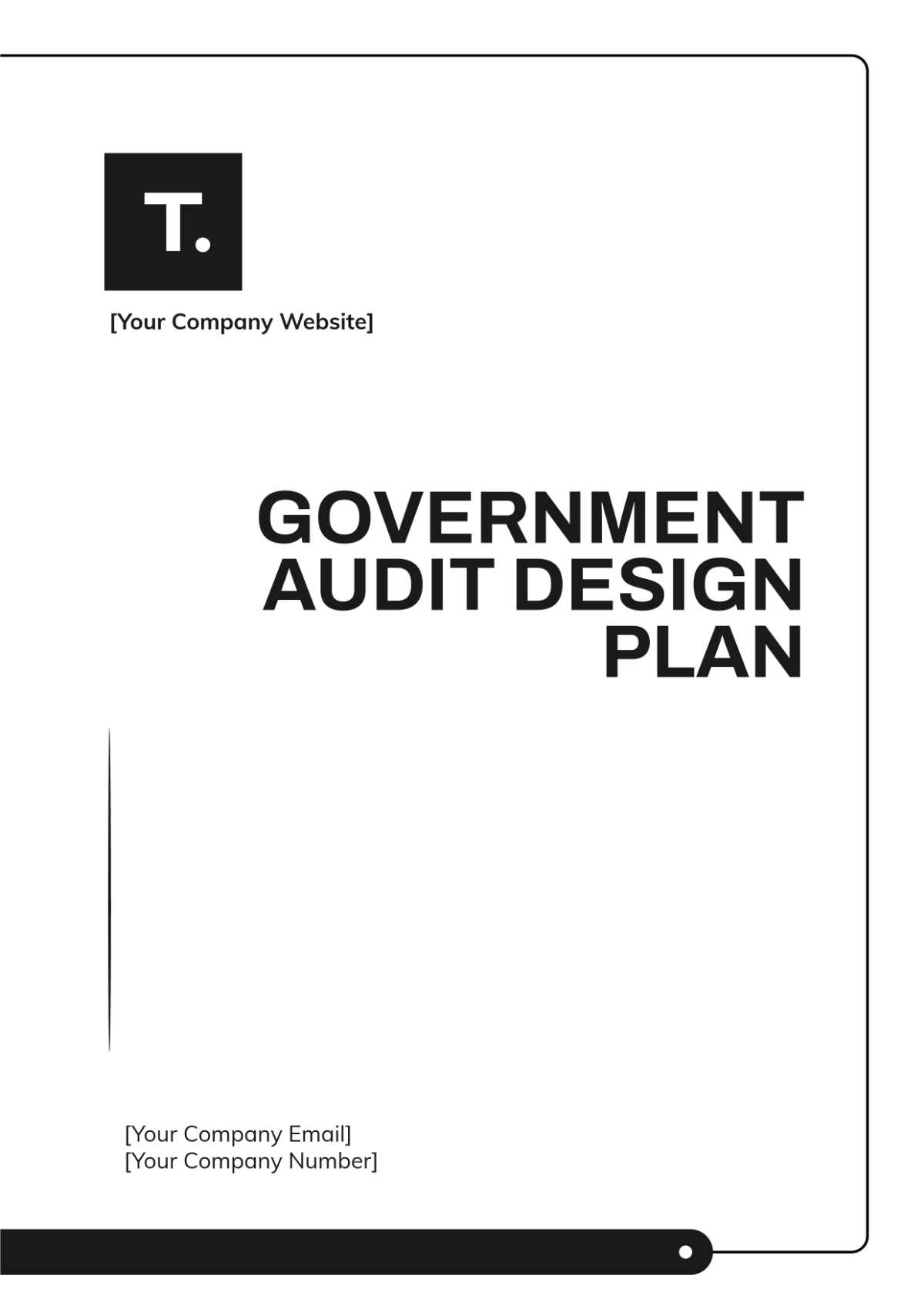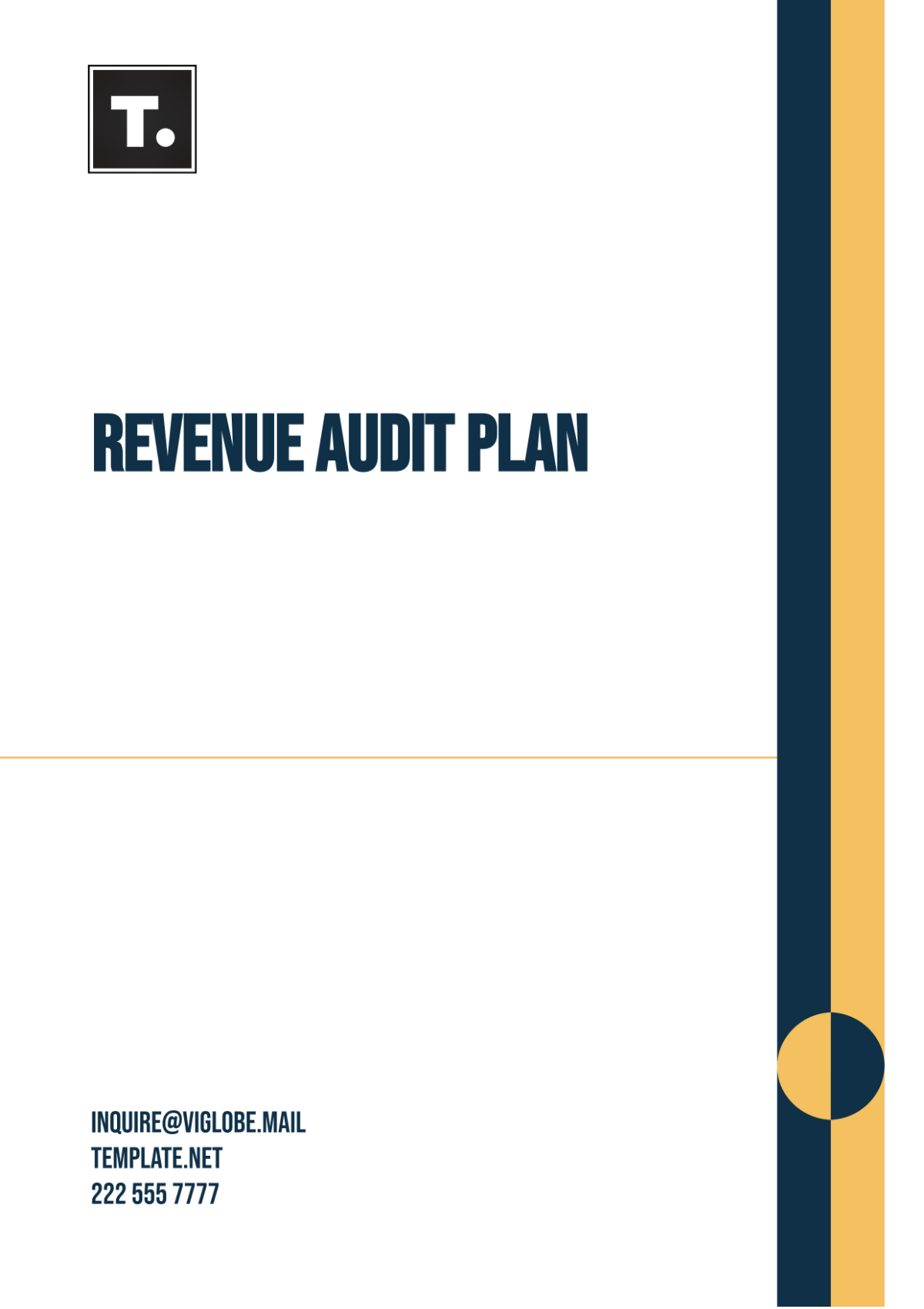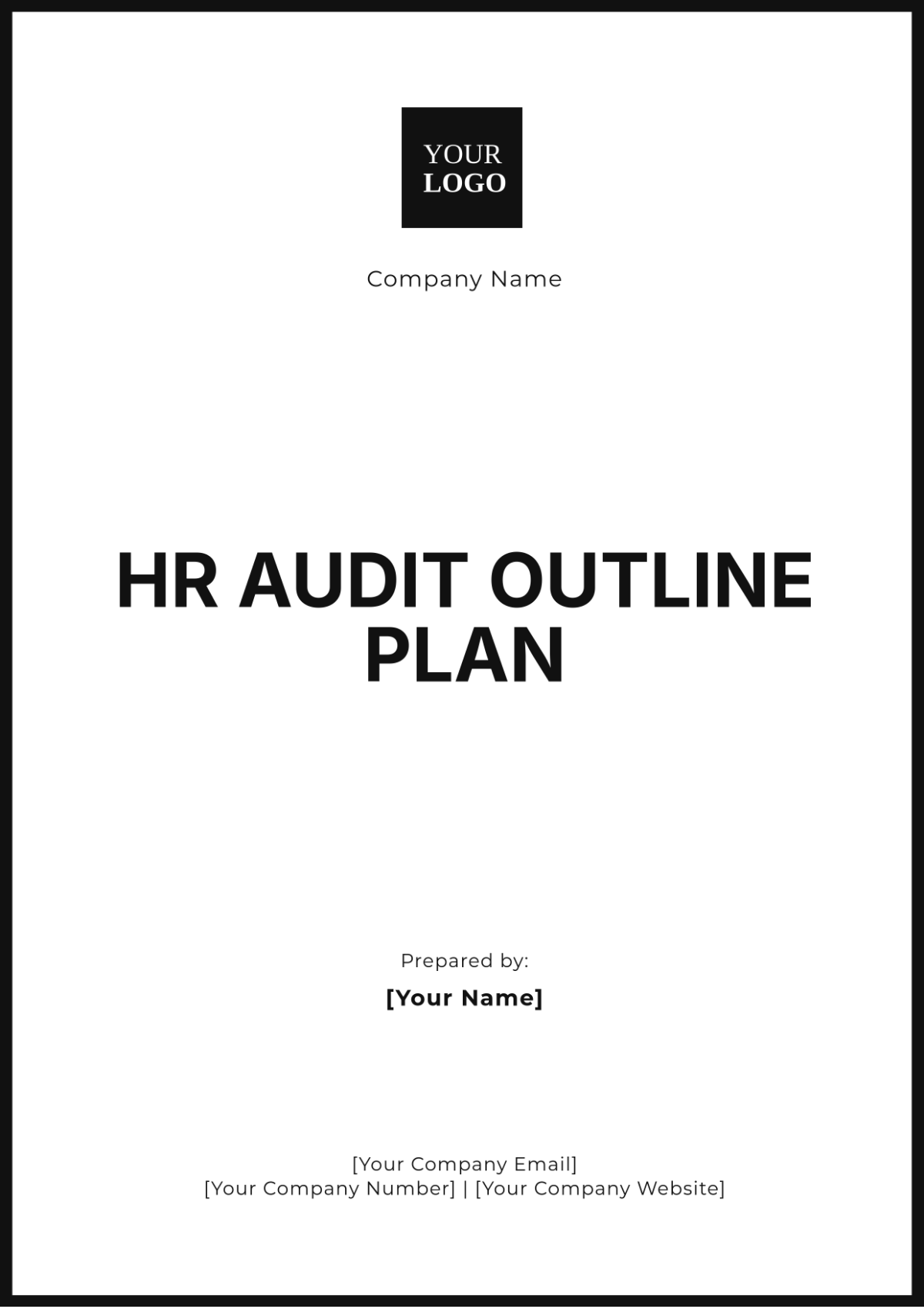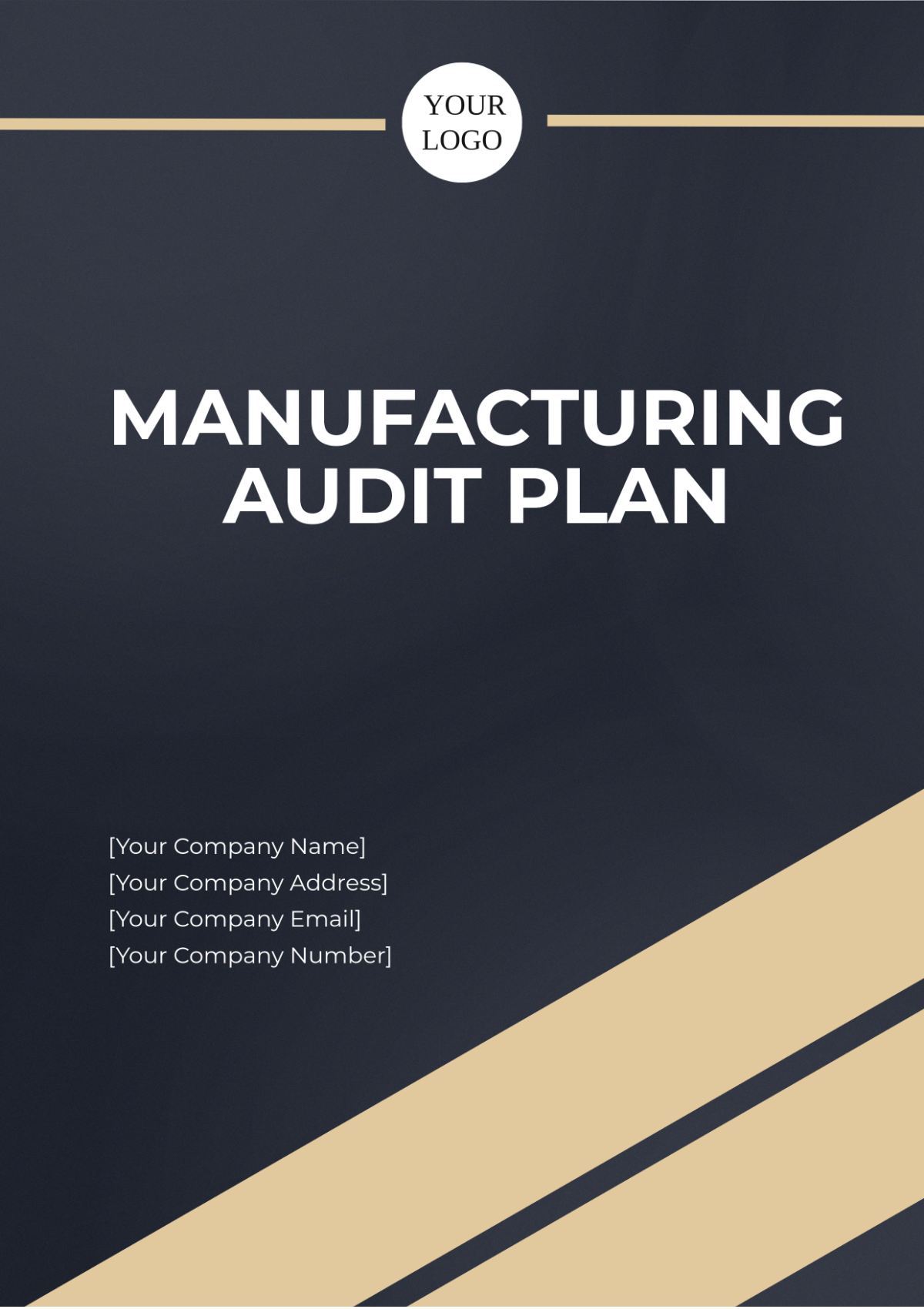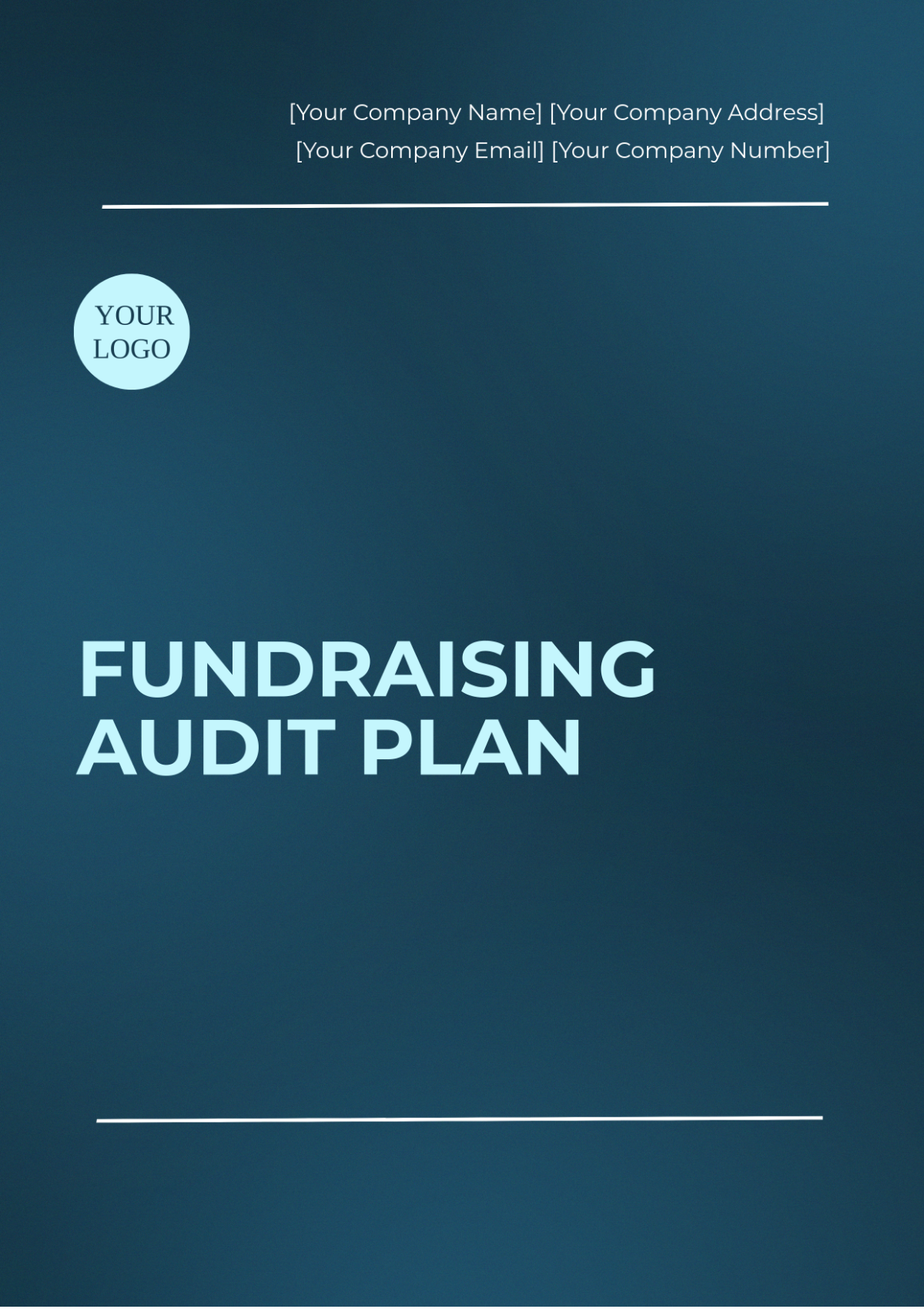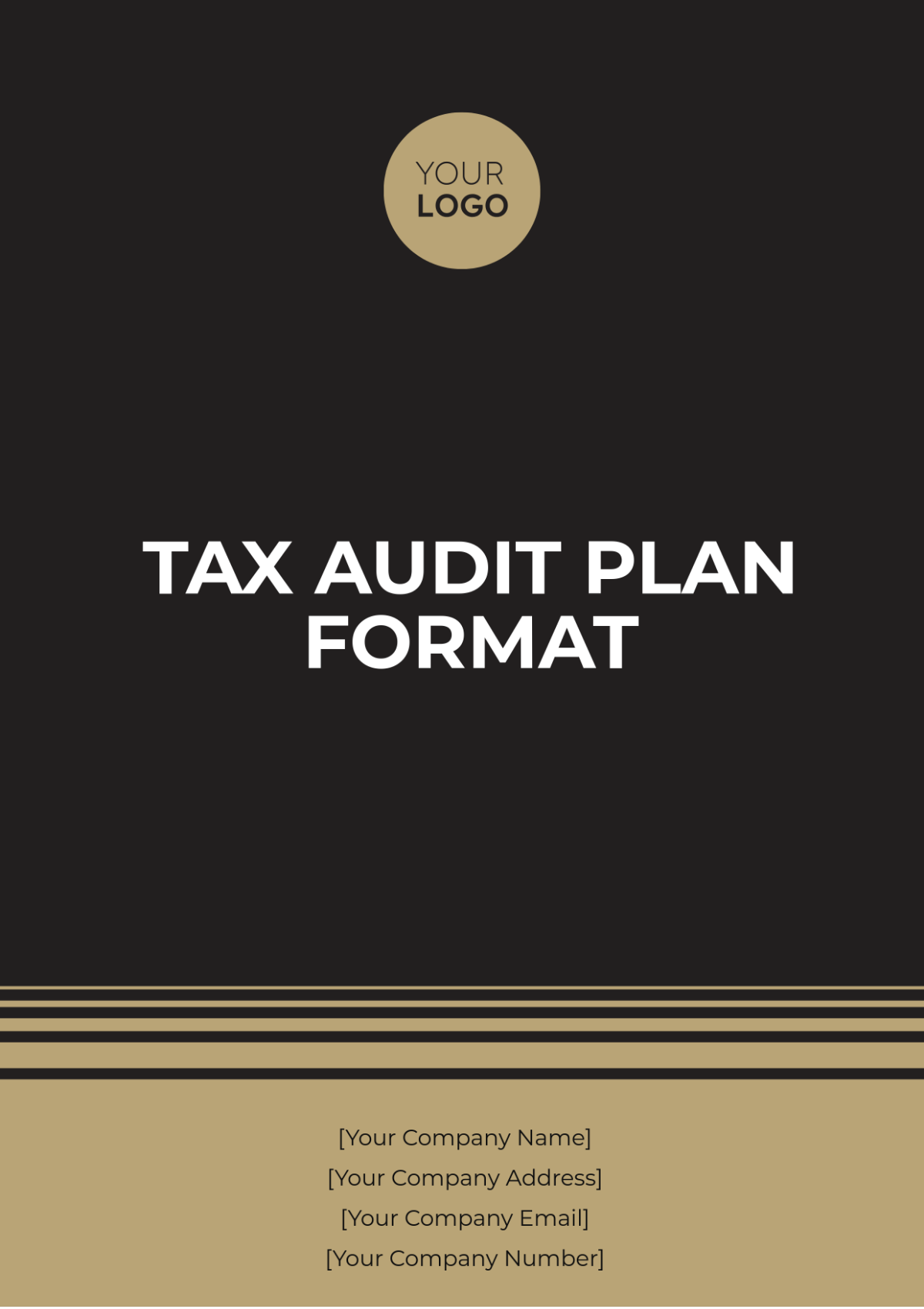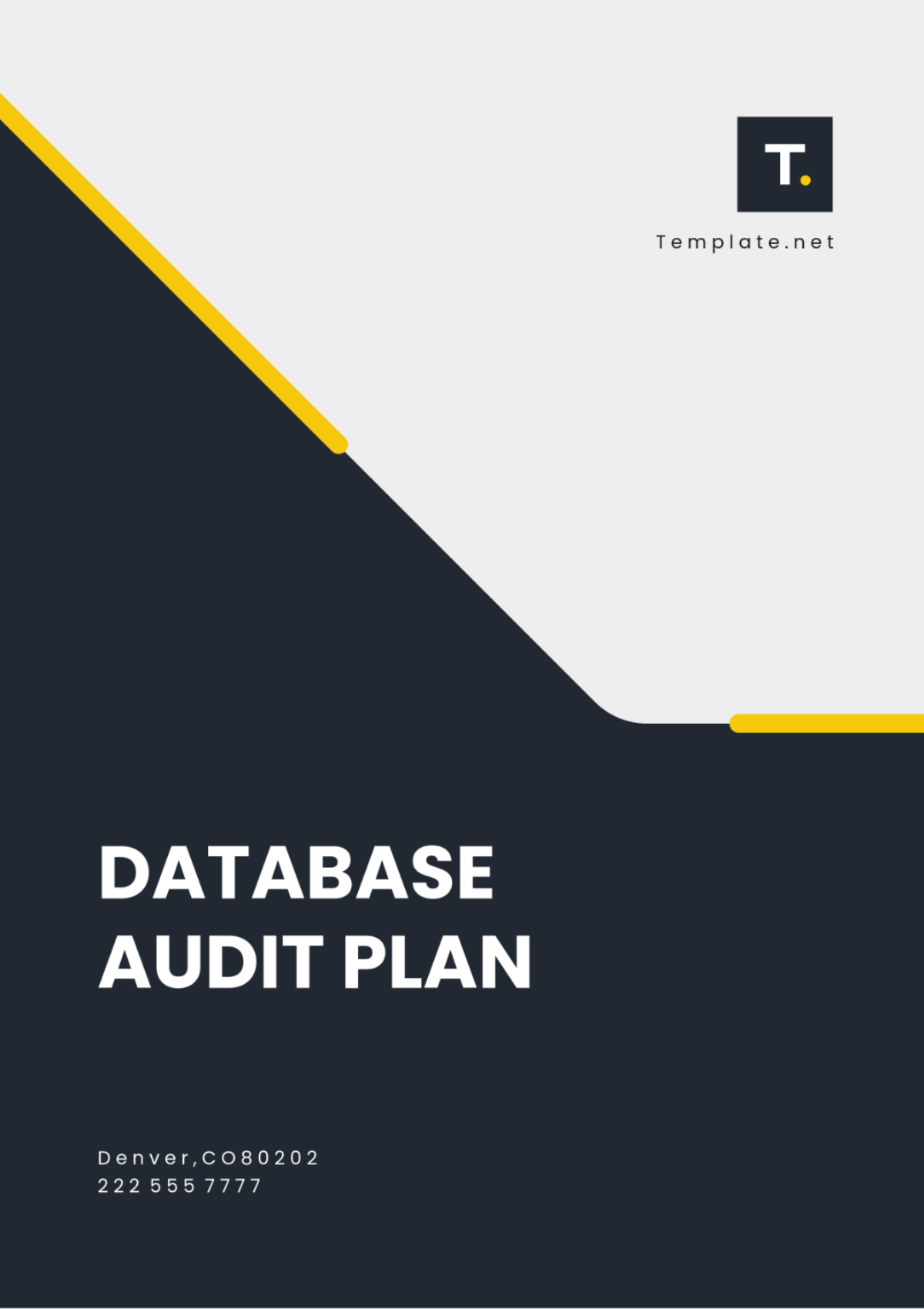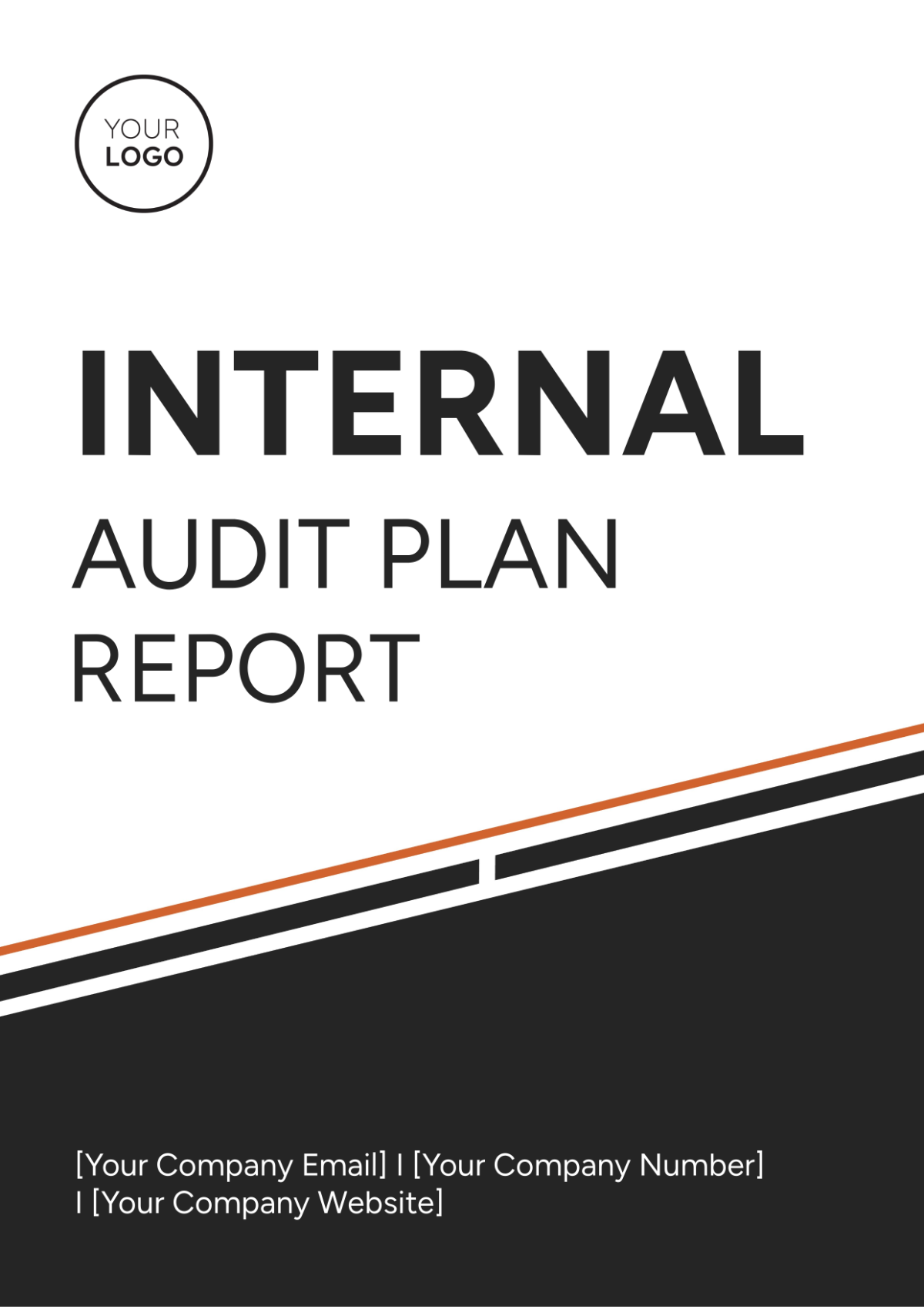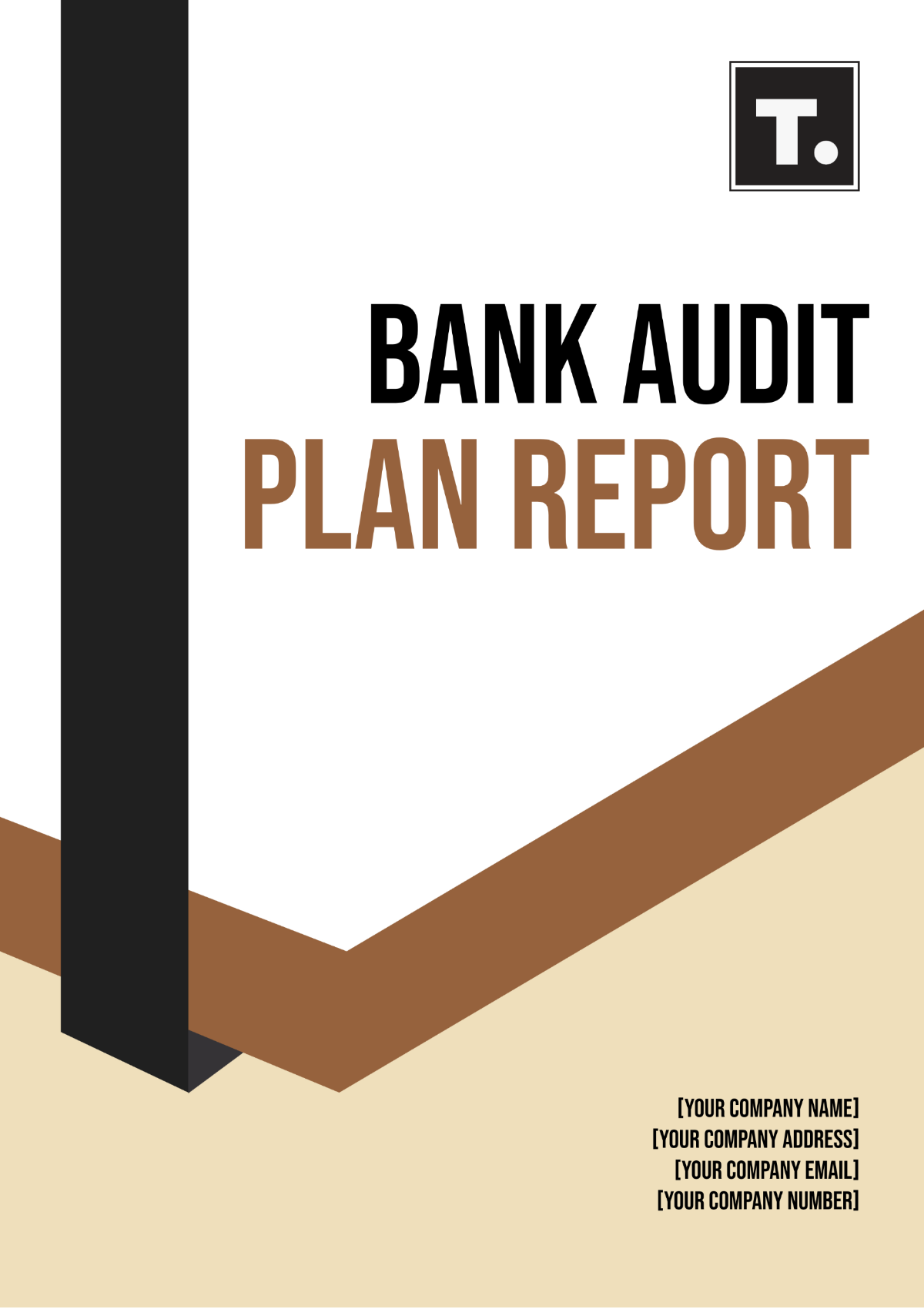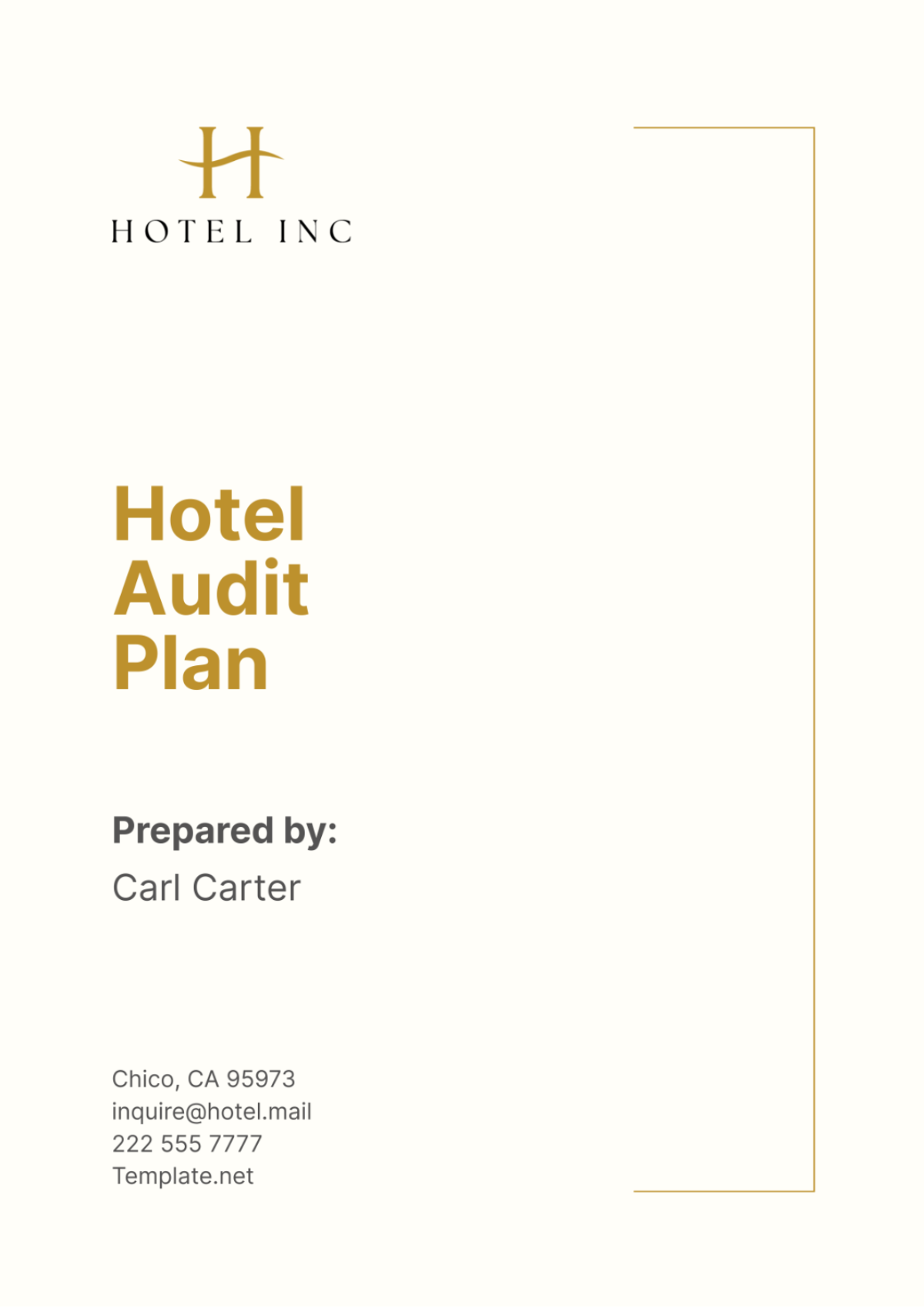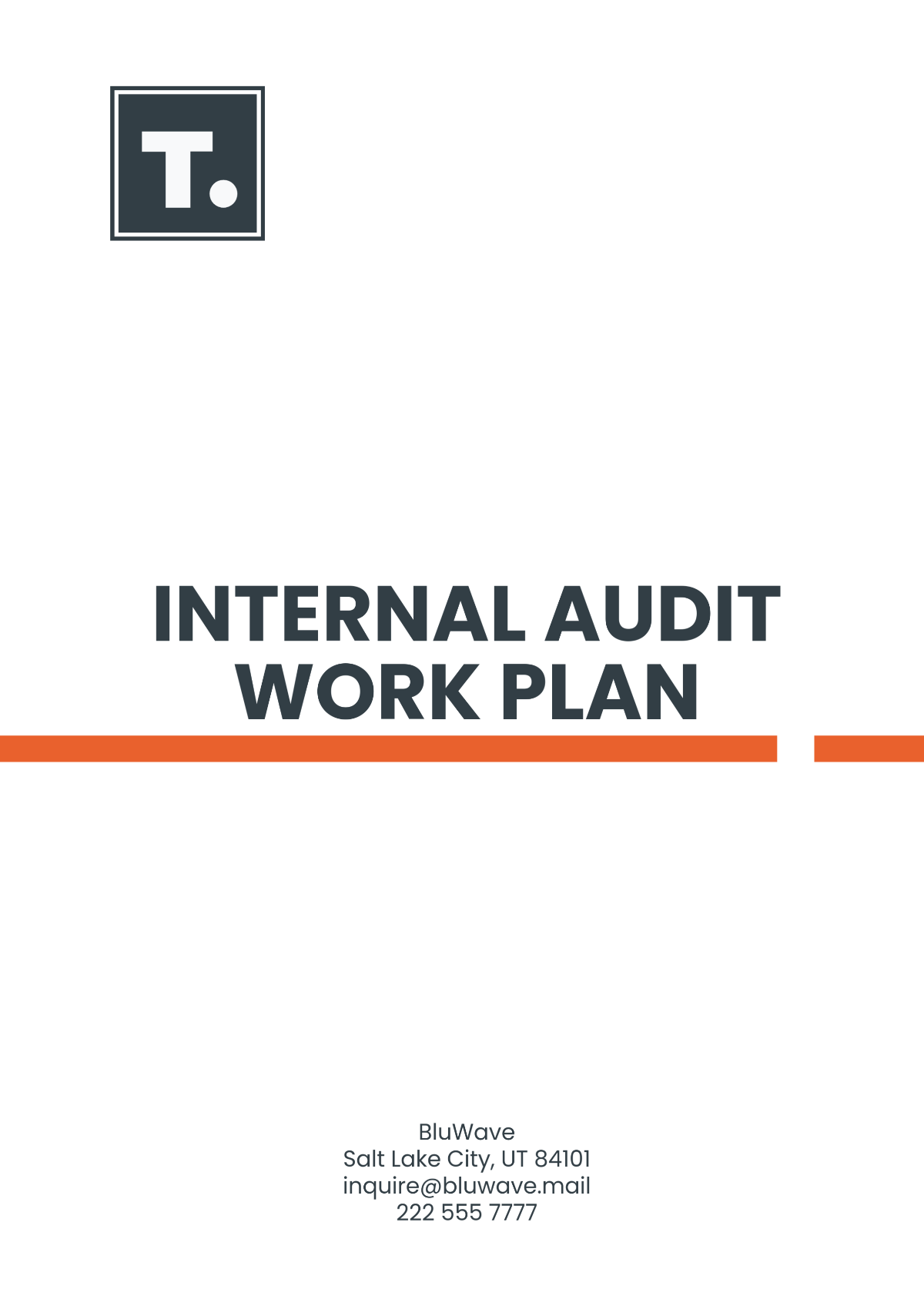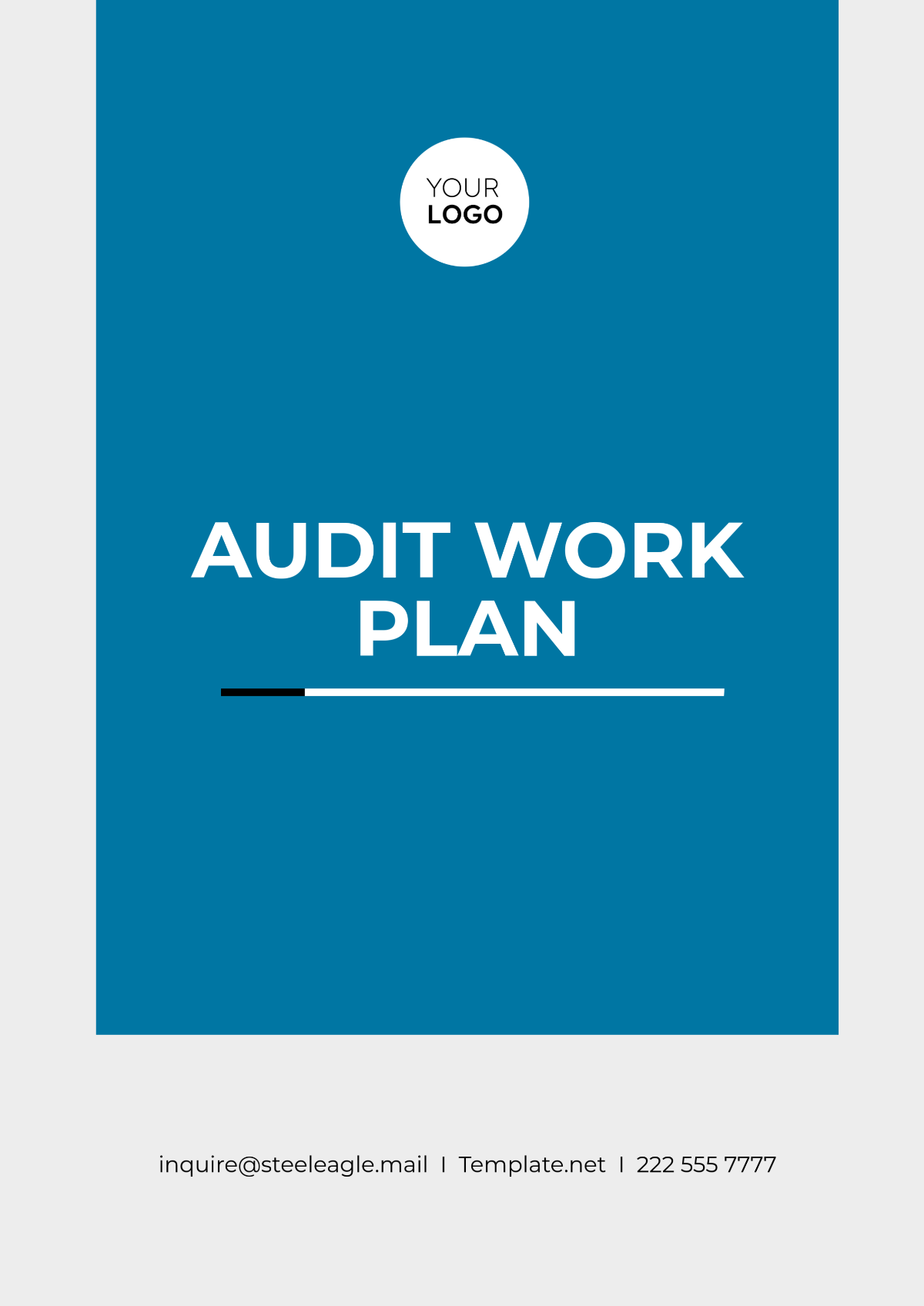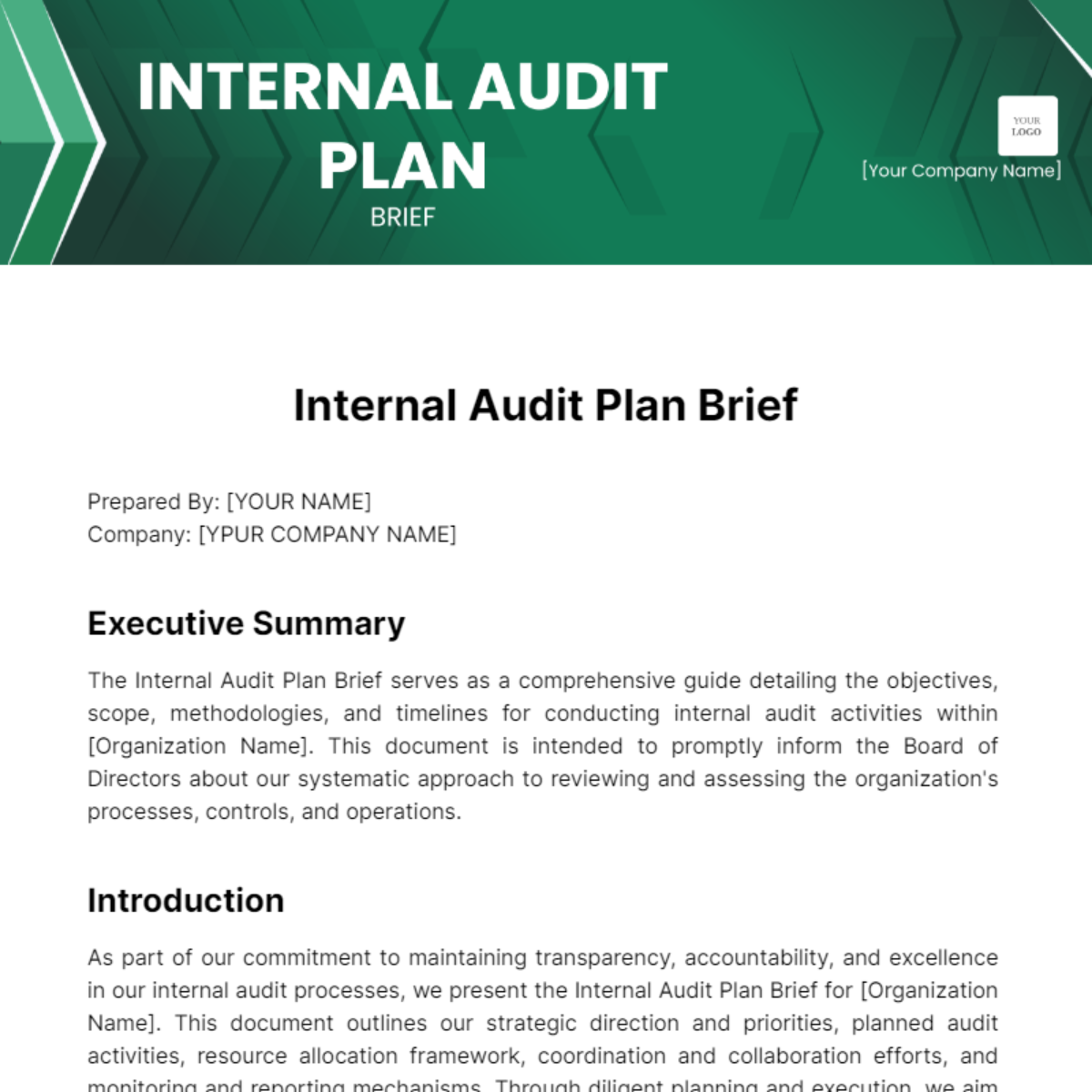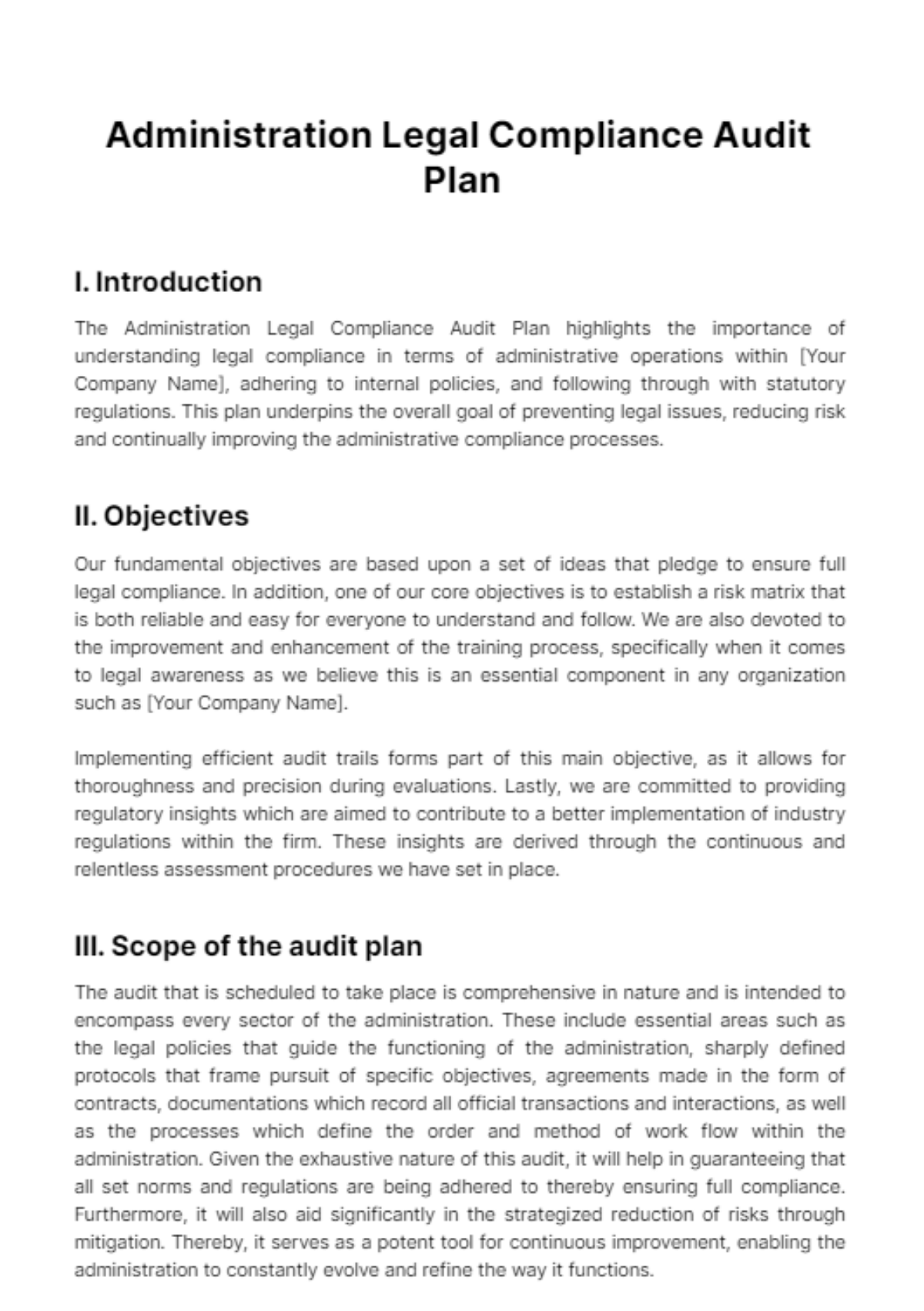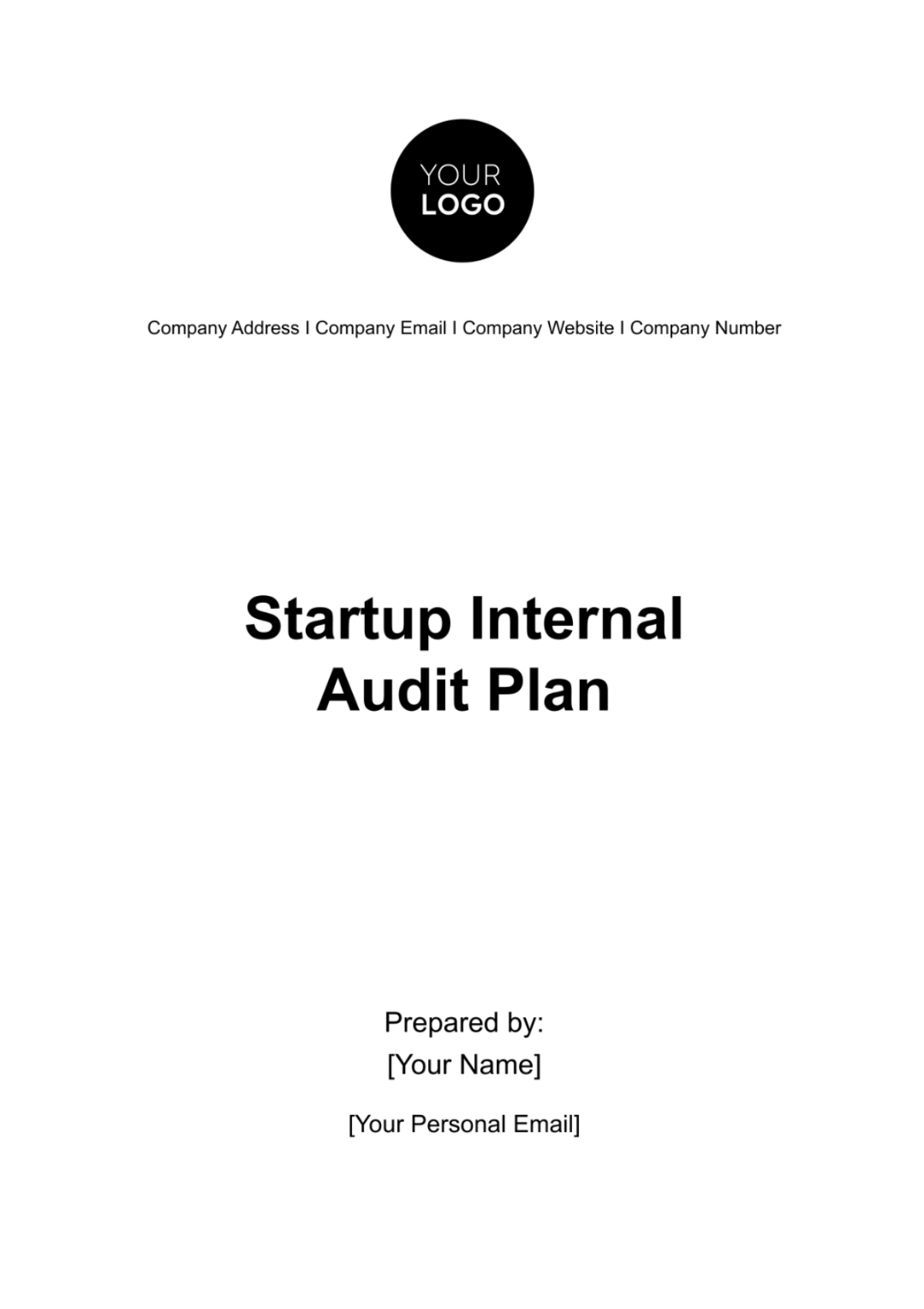Security Audit Plan
1. Objective of the Audit
The primary objective of this security audit is to assess the effectiveness of our organization's security controls, policies, and procedures in safeguarding sensitive information and resources. The audit will focus on identifying vulnerabilities, ensuring compliance with relevant regulations, and recommending improvements to enhance the overall security posture.
2. Scope of the Audit
This audit will cover the following areas:
Physical Security: Evaluation of access controls, surveillance systems, and facility security measures.
Network Security: Assessment of firewalls, intrusion detection systems, and secure configurations.
Application Security: Review of software security practices, including secure coding standards and vulnerability management.
Data Security: Examination of data encryption practices, data loss prevention measures, and data access controls.
Compliance: Verification of adherence to relevant standards and regulations, such as GDPR, HIPAA, and PCI DSS.
3. Audit Methodology
The audit will follow a systematic approach, including:
Planning Phase: Initial meetings with key stakeholders to understand the current security landscape and establish audit objectives.
Fieldwork Phase: On-site assessments, interviews with personnel, and collection of relevant documentation.
Analysis Phase: Evaluation of findings against best practices and regulatory requirements.
Reporting Phase: Preparation of a detailed report summarizing findings, recommendations, and action items.
4. Timeline
Audit Start Date: January 5, 2071
Audit End Date: February 15, 2071
Draft Report Submission: March 1, 2071
Final Report Due: March 15, 2071
Follow-up Review: August 1, 2071
5. Resources Required
Audit Team Members:
Lead Auditor
Network Security Specialist
Application Security Specialist
Tools and Technologies:
Security assessment tools (e.g., Nessus, Qualys)
Documentation and reporting tools (e.g., Microsoft Office, Google Workspace)
Budget: Estimated cost of $[Amount] for tools, resources, and personnel.
6. Key Deliverables
Comprehensive security audit report detailing findings, risk assessments, and prioritized recommendations.
Executive summary for management outlining key risks and proposed mitigations.
Presentation of findings to stakeholders, including IT management and executive leadership.
7. Communication Plan
Regular updates will be communicated to stakeholders throughout the audit process, including:
Weekly Progress Meetings: Every Day of the Week at Time.
Status Reports: Bi-weekly reports detailing completed activities and upcoming tasks.
Final Presentation: Scheduled for March 20, 2071, to review findings and recommendations.
8. Conclusion
This Security Audit Plan aims to enhance our organization's security framework and ensure that we remain compliant with applicable regulations. Through a thorough assessment and collaborative approach, we will identify areas for improvement and strengthen our security posture.
Prepared By:
 [Your Name]
[Your Name]
[Your Email]
